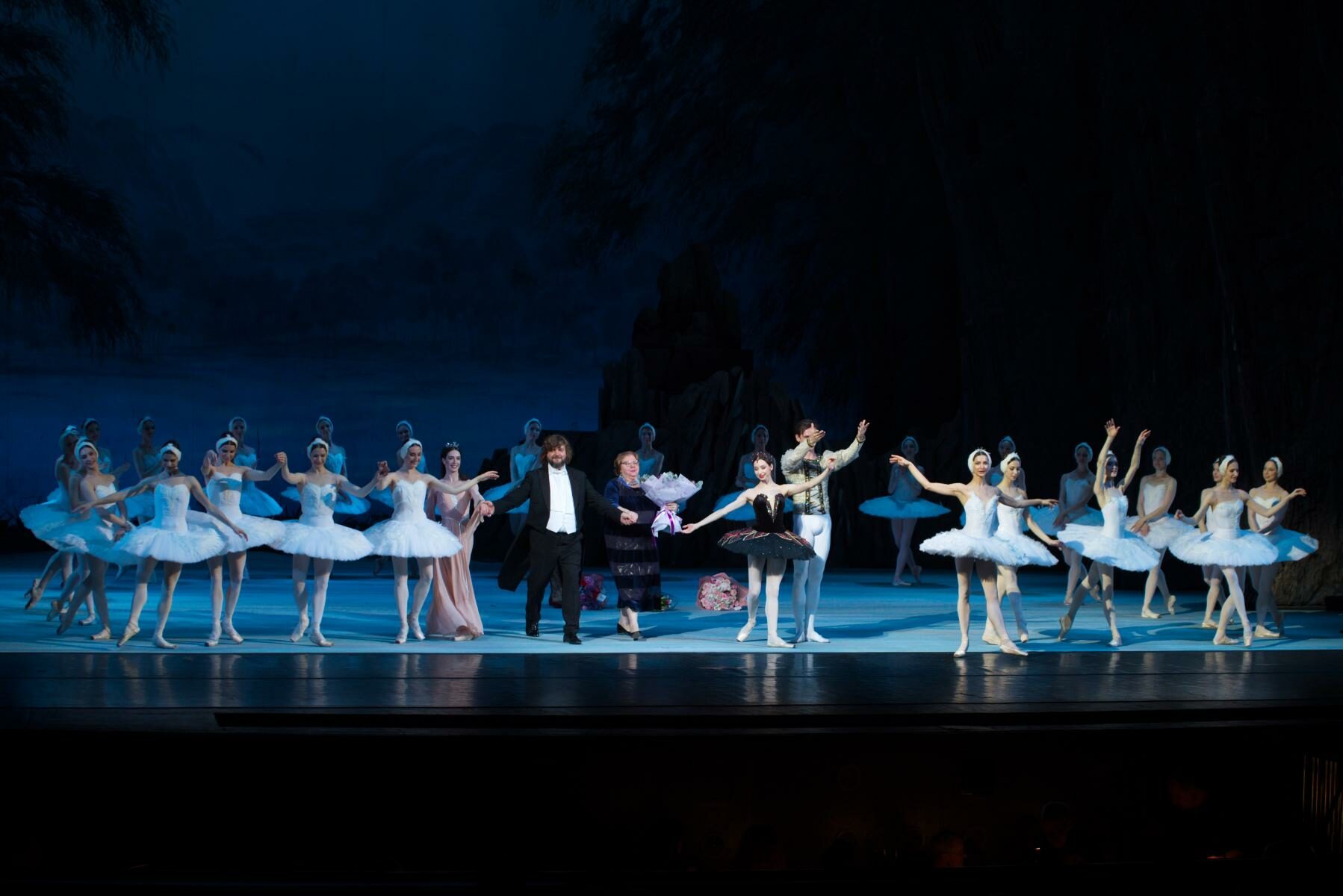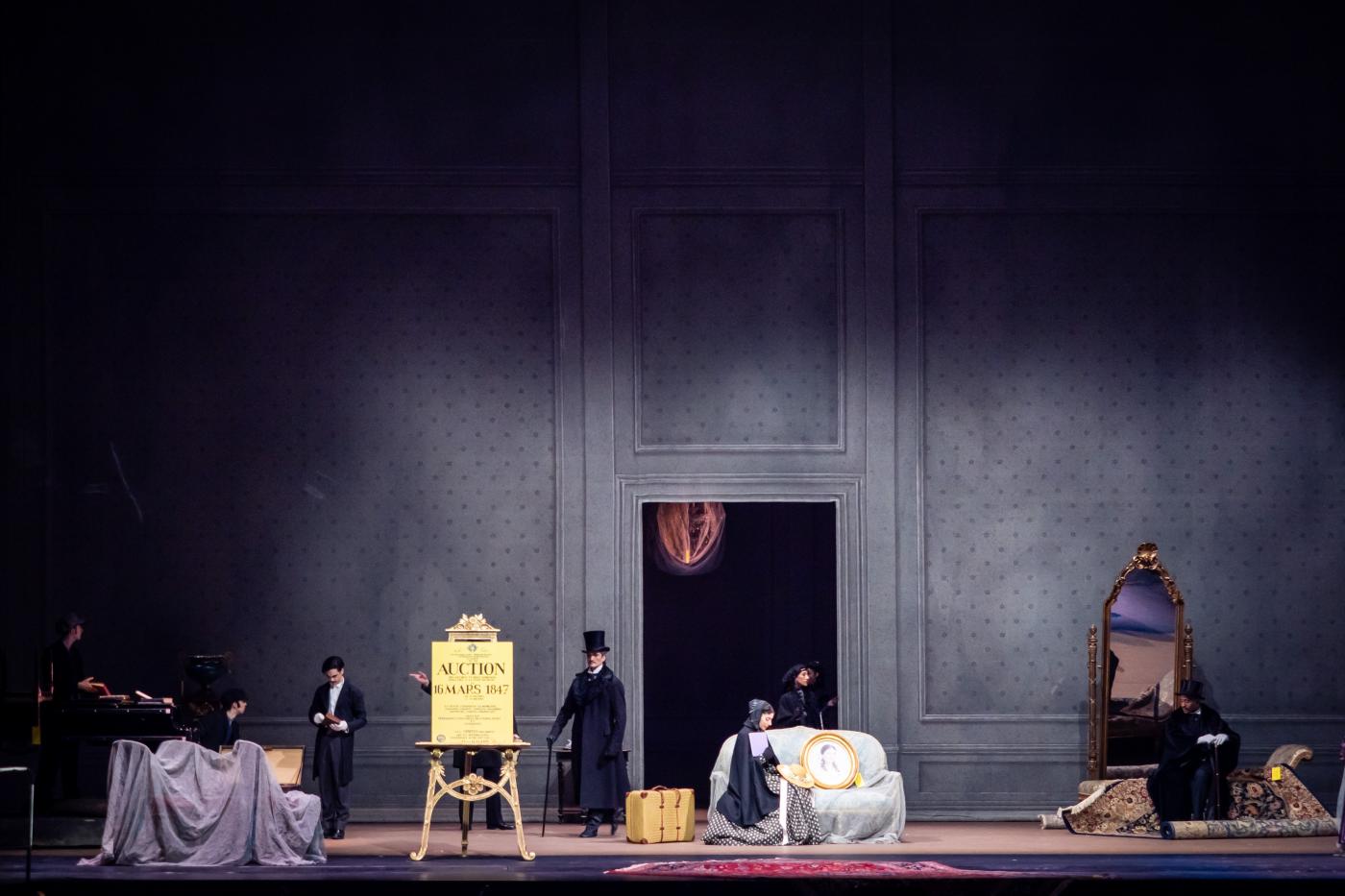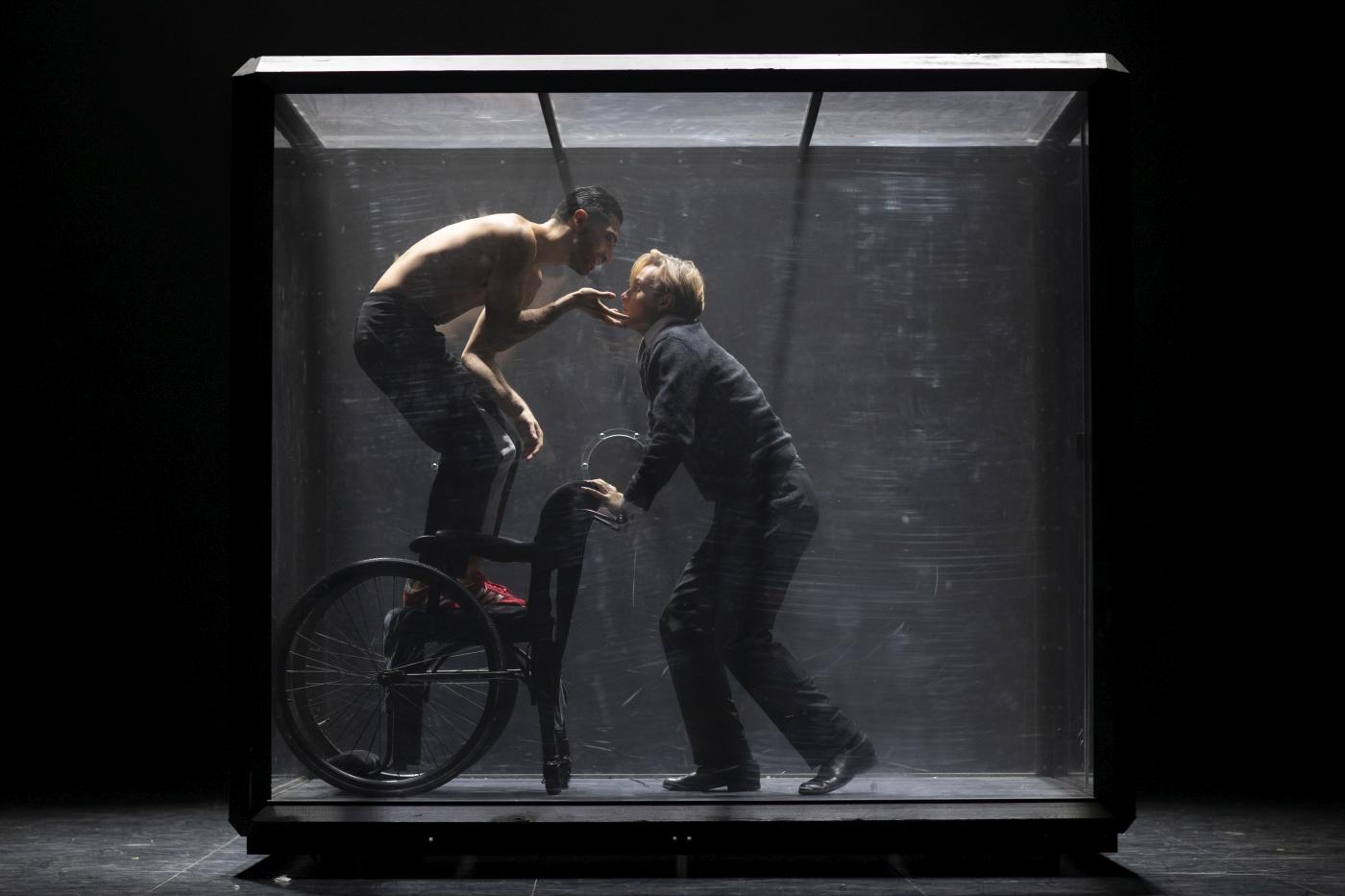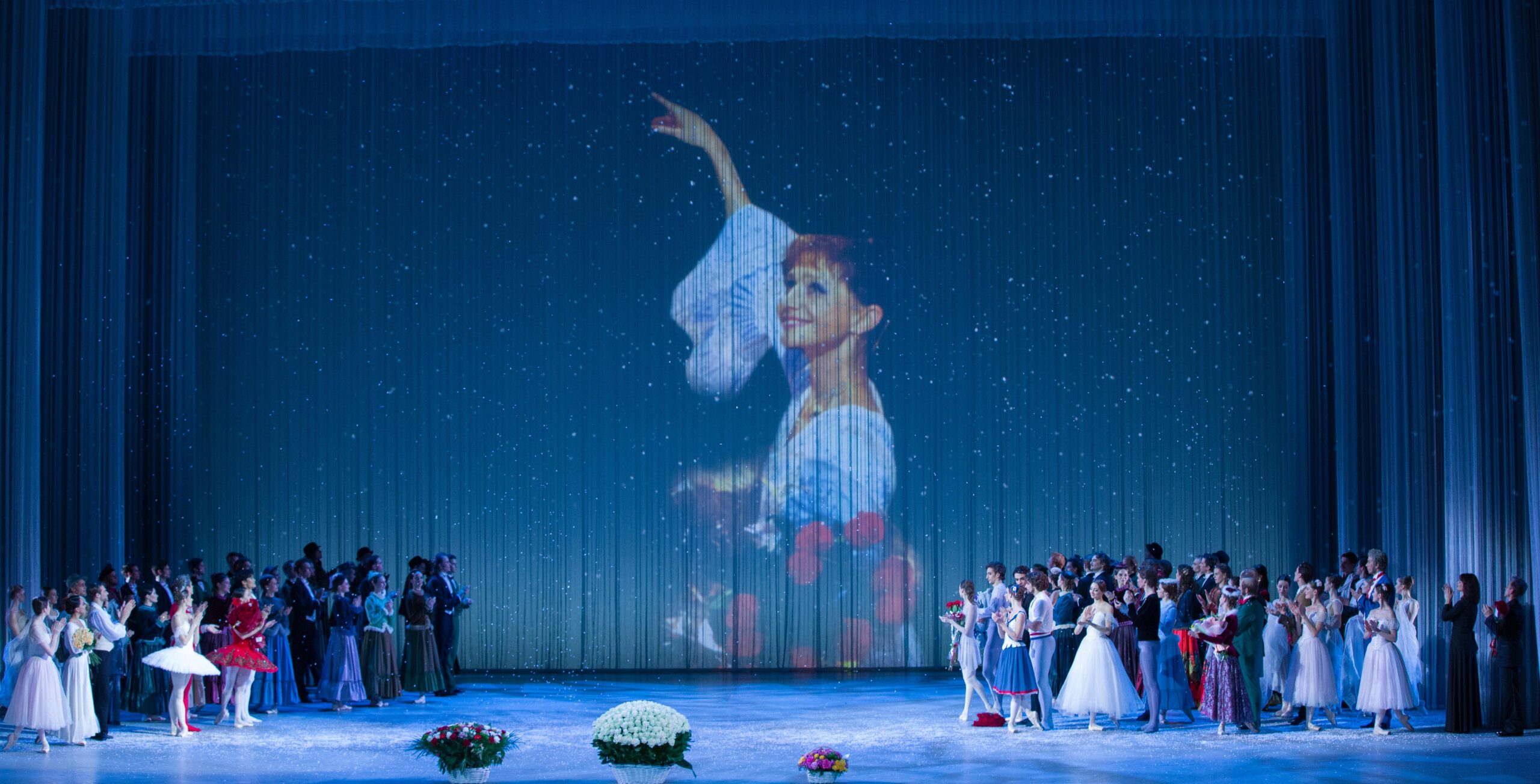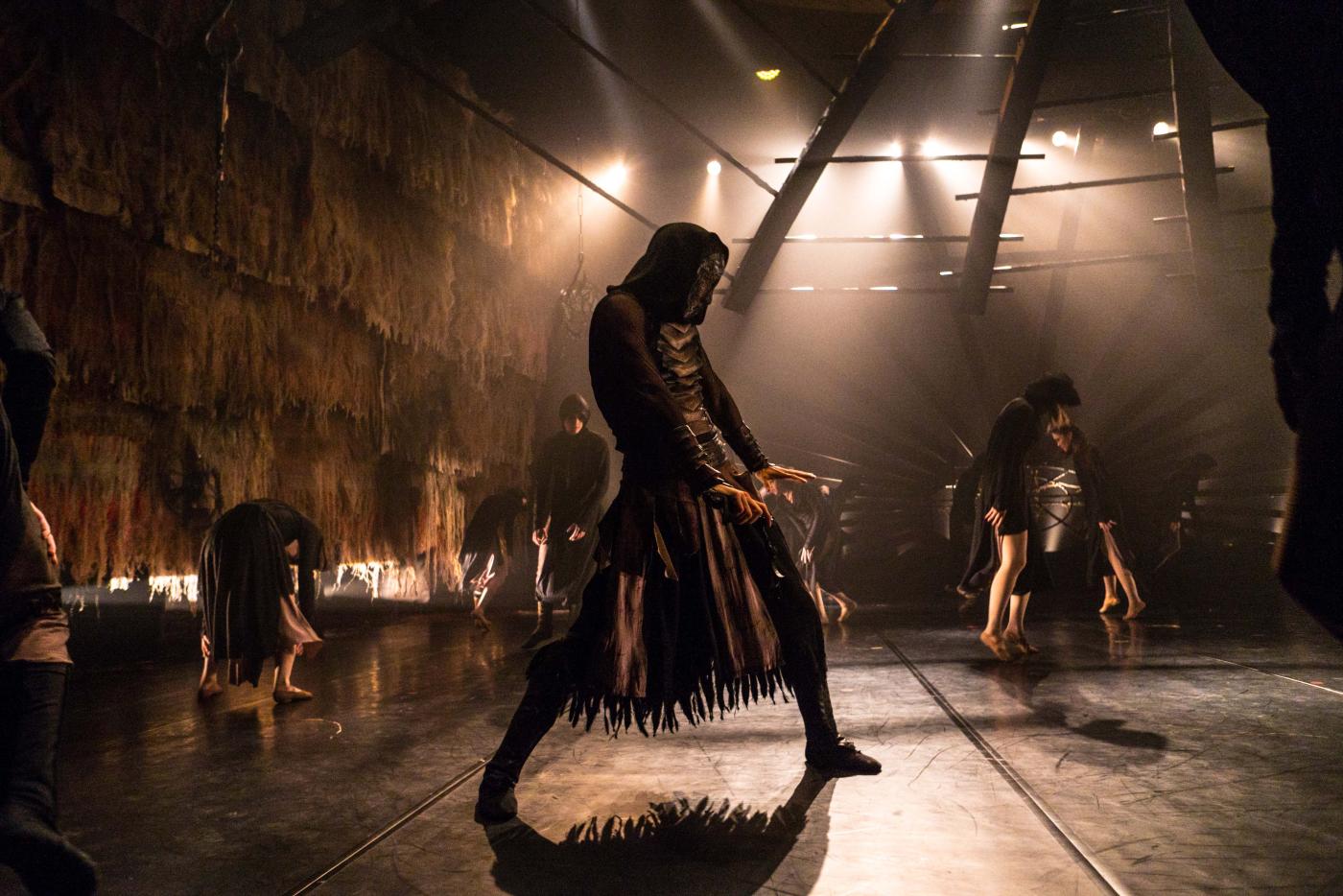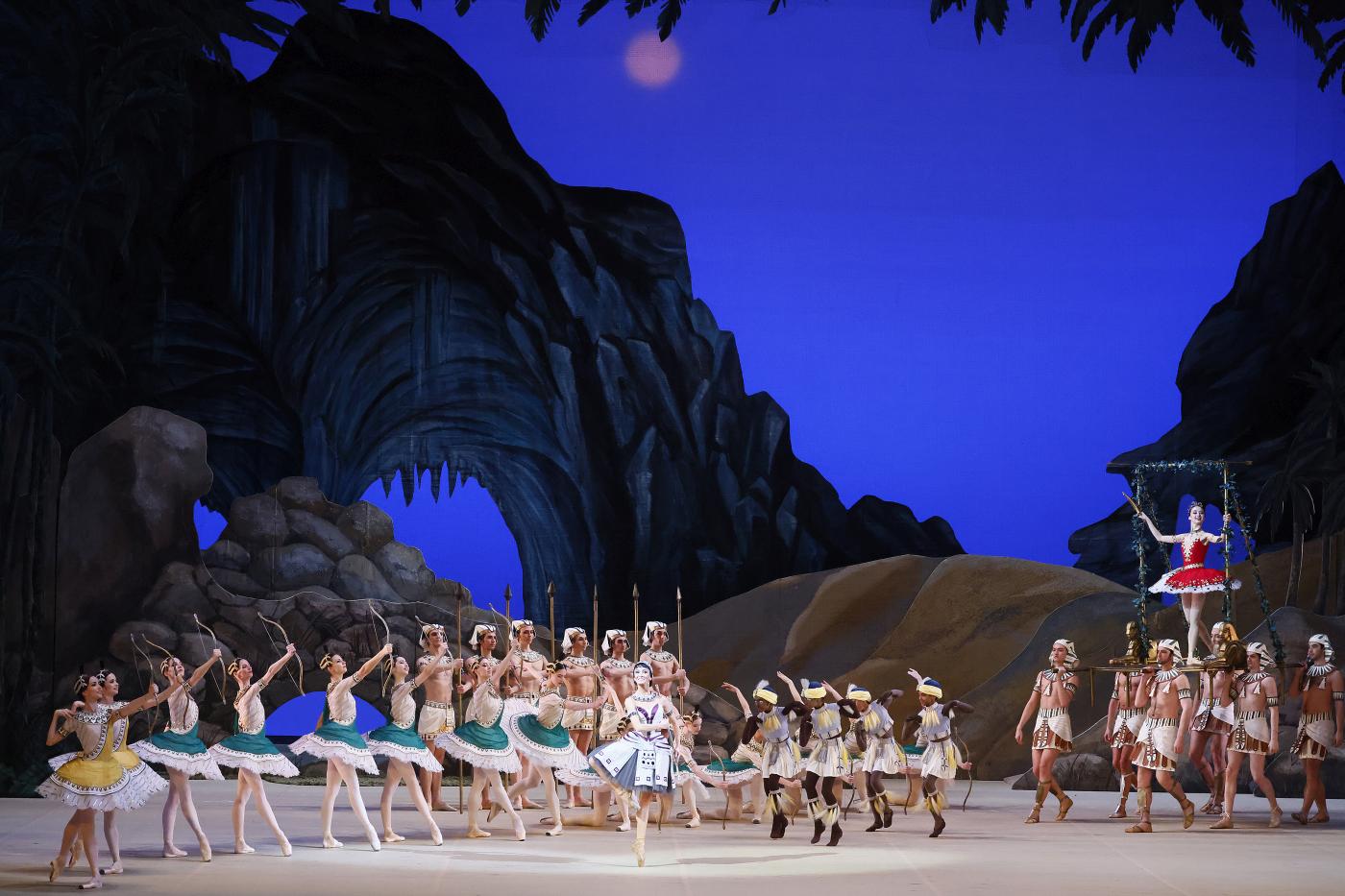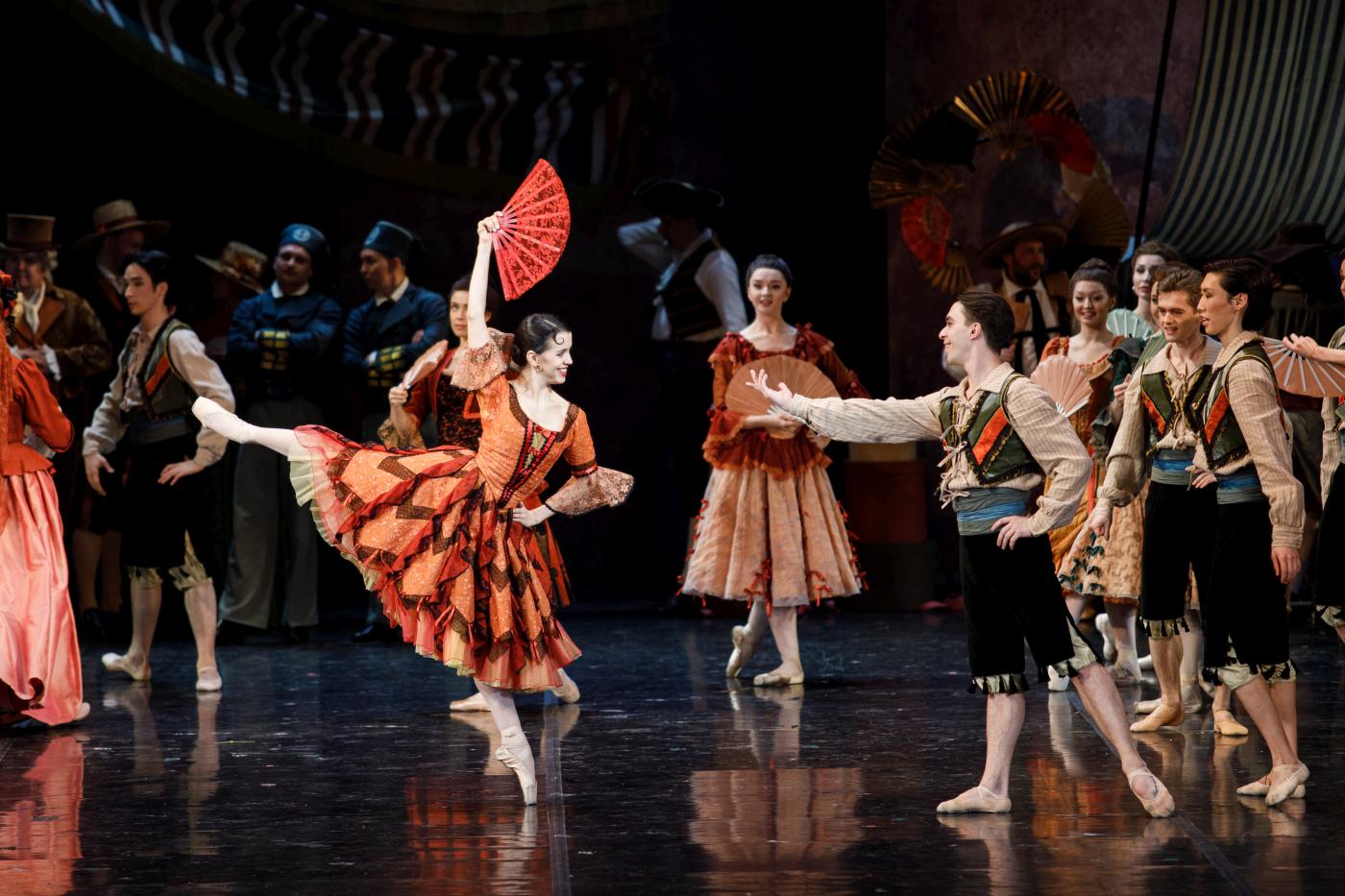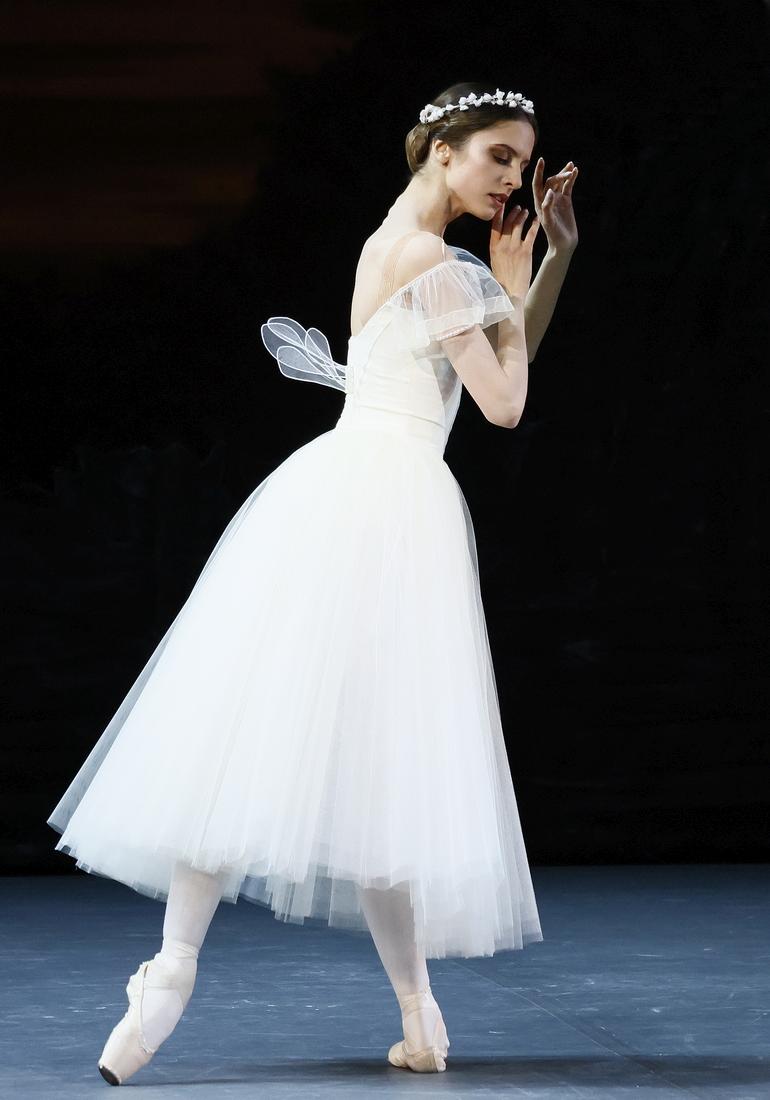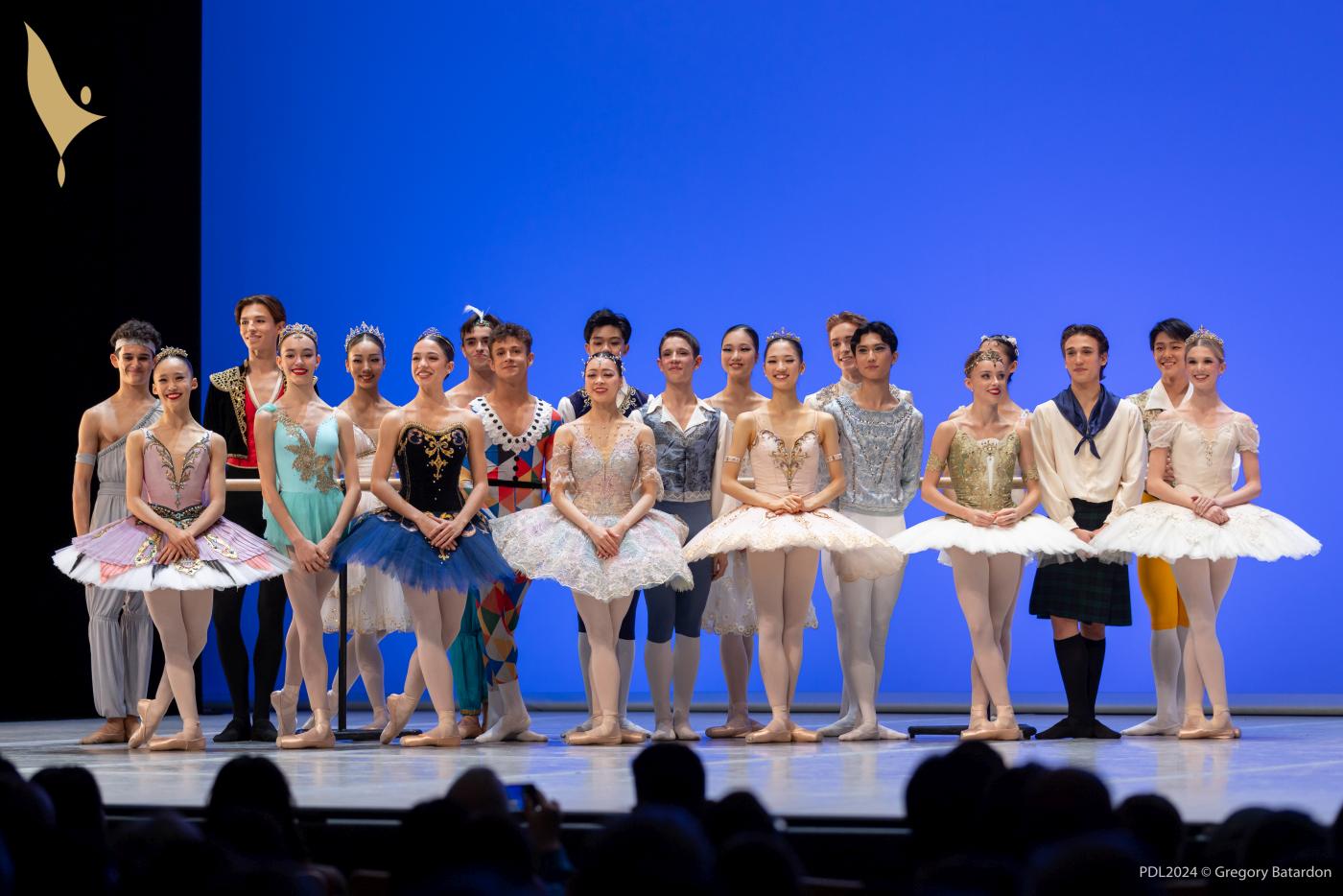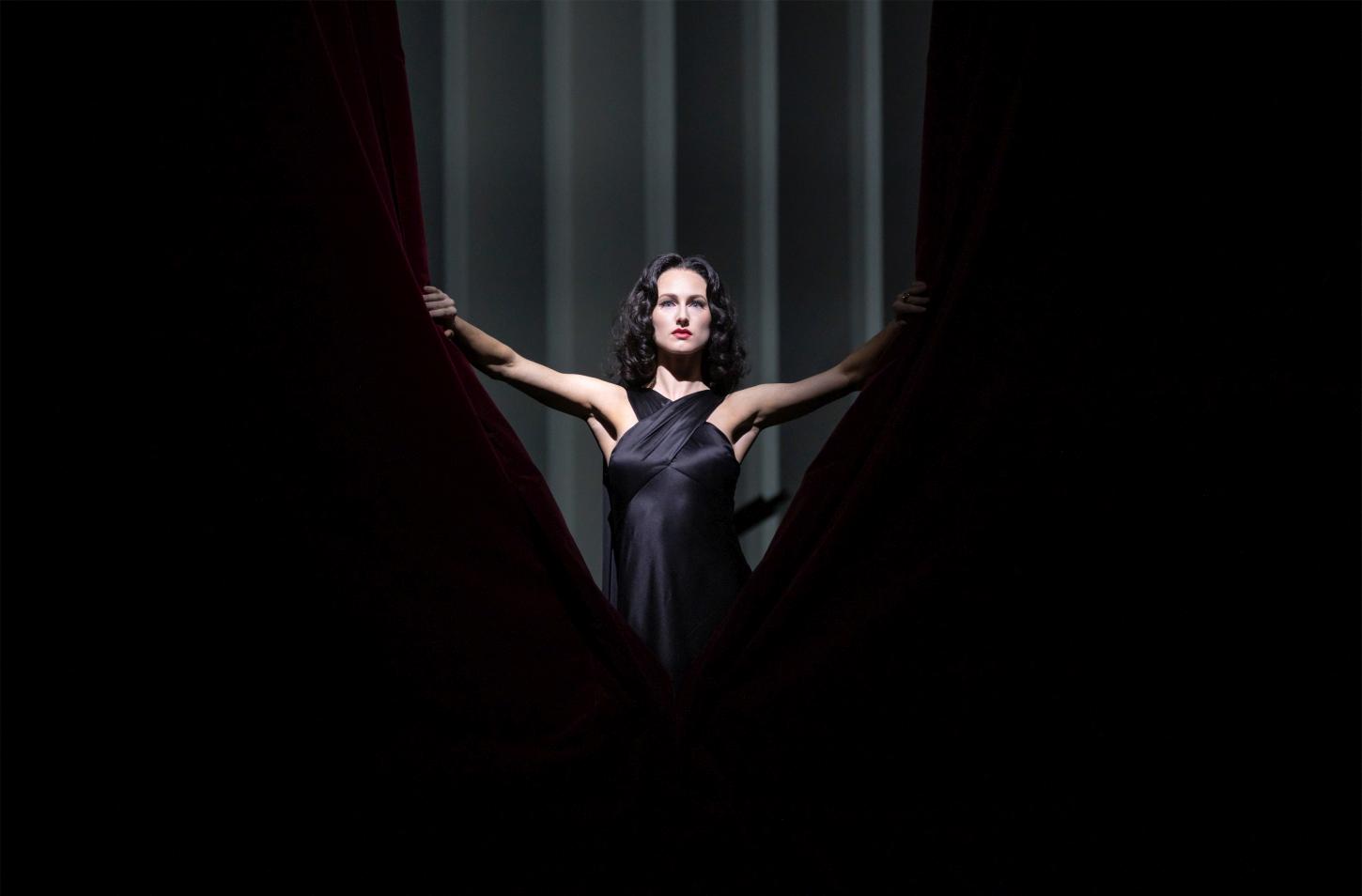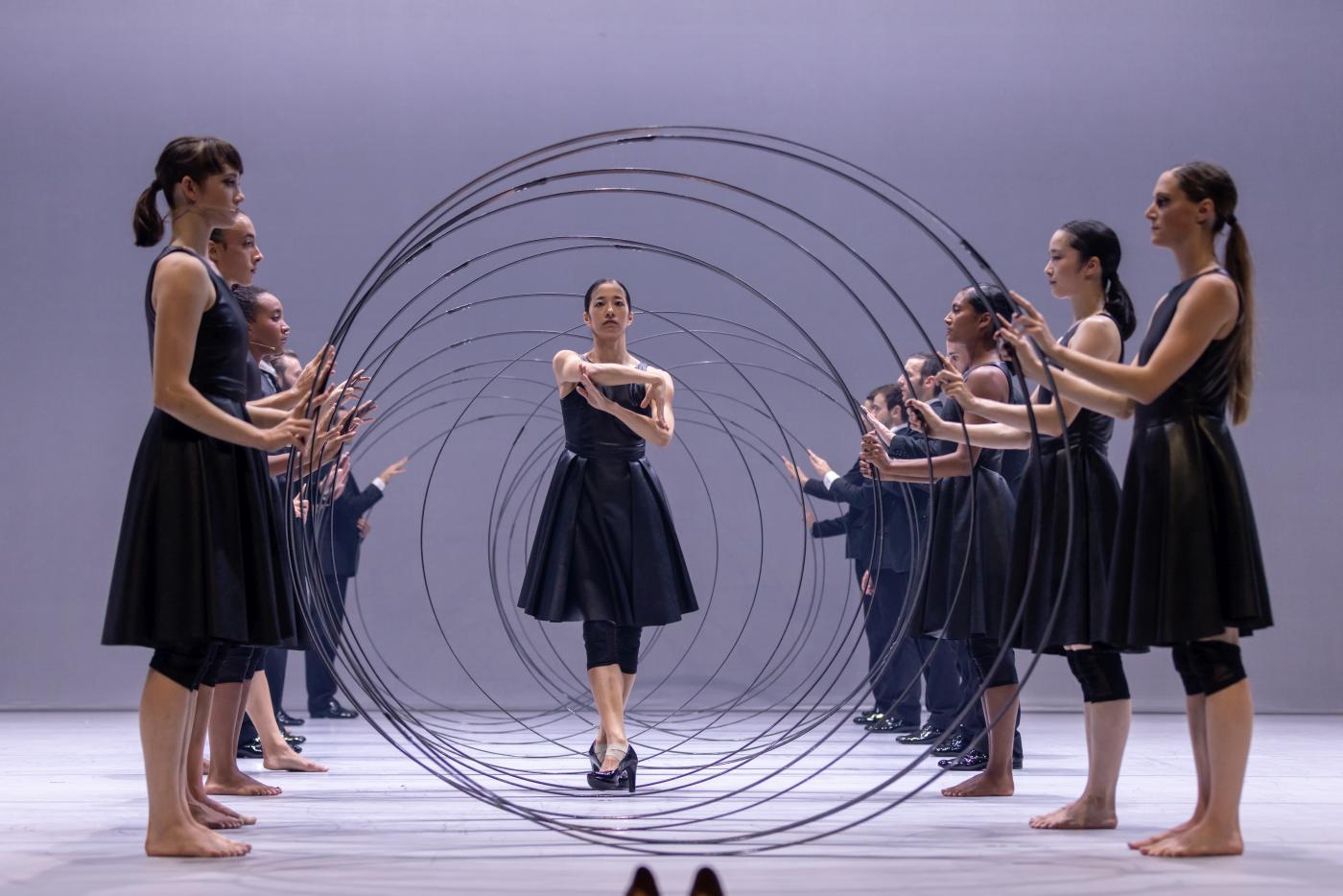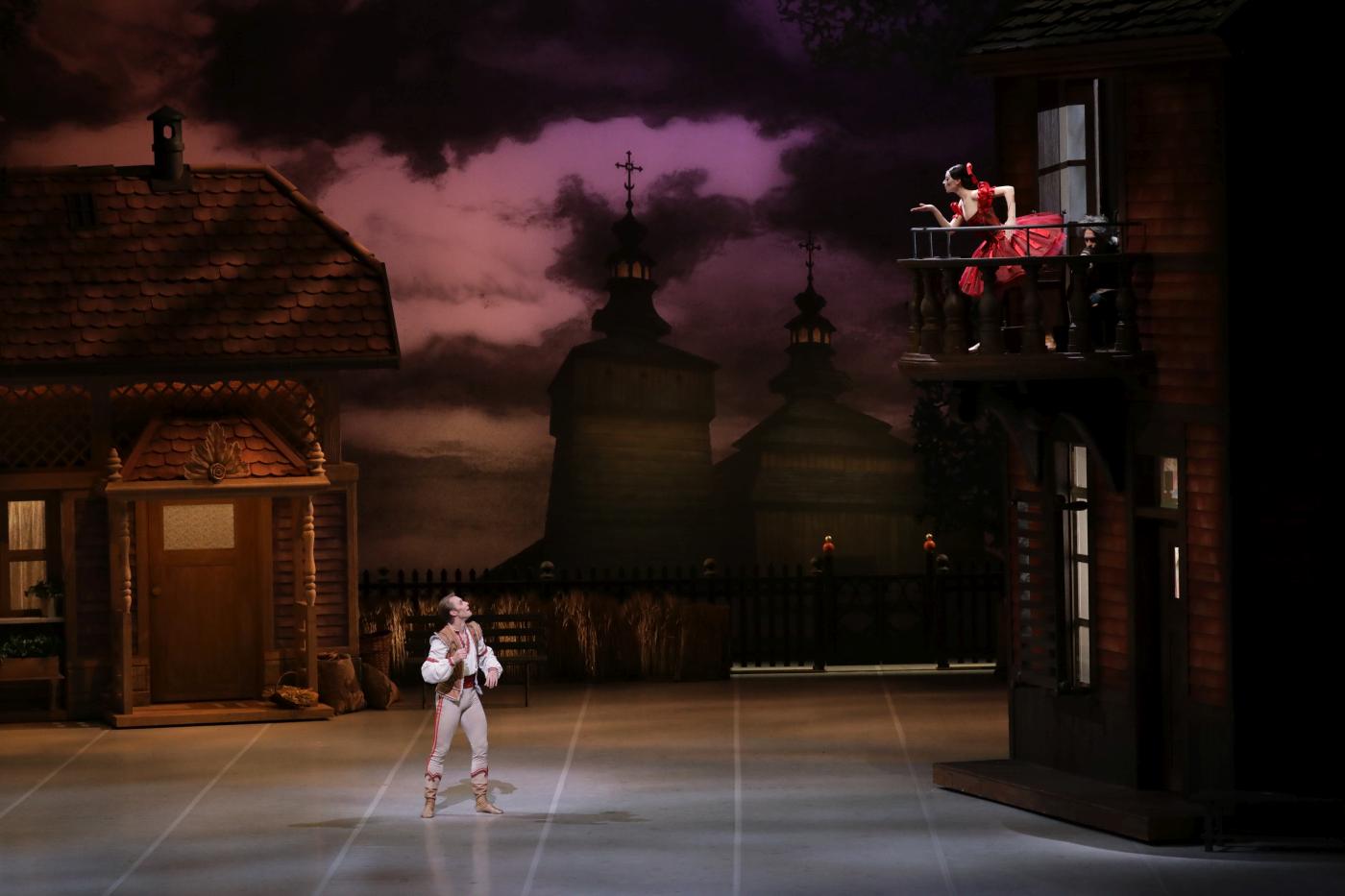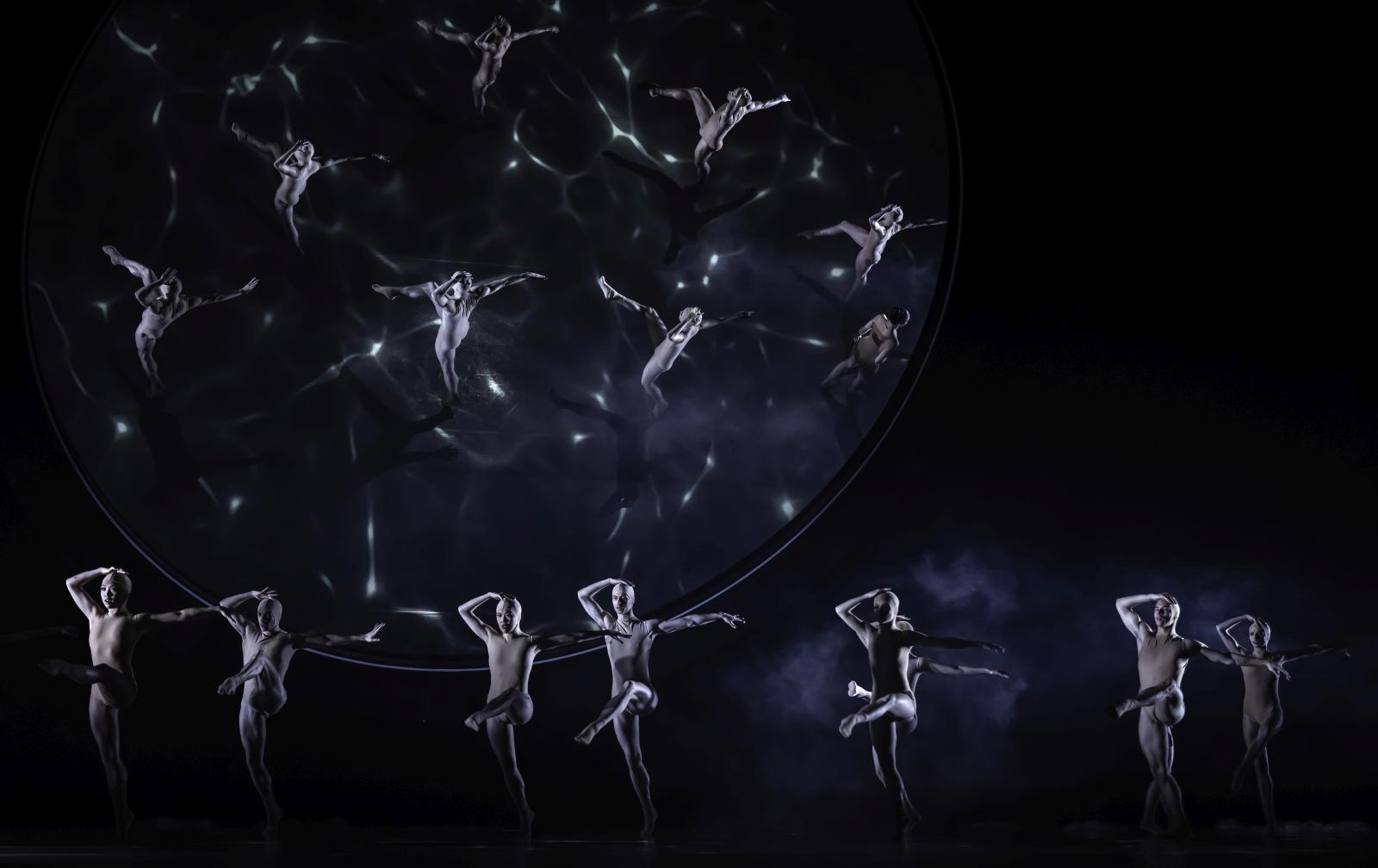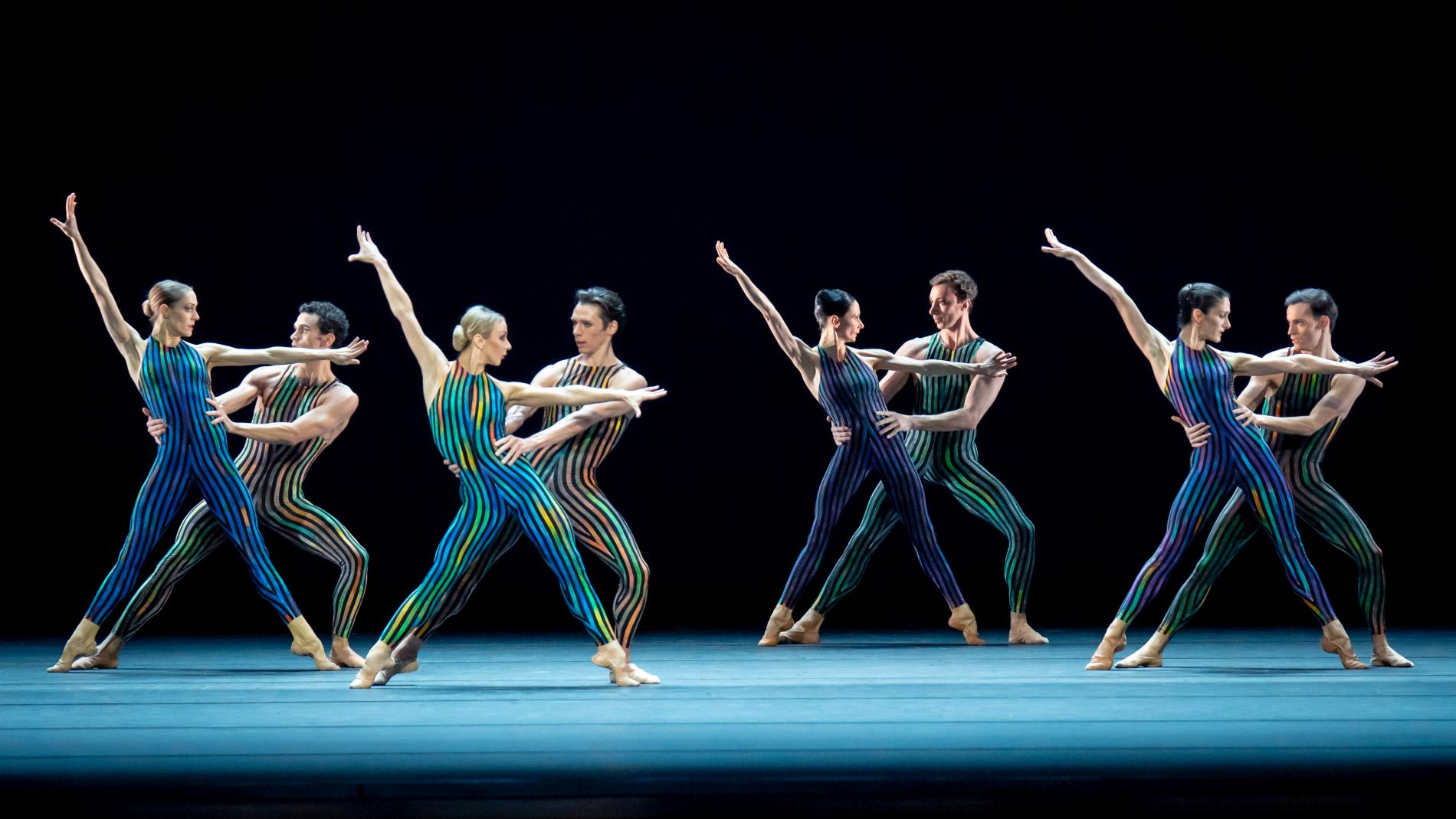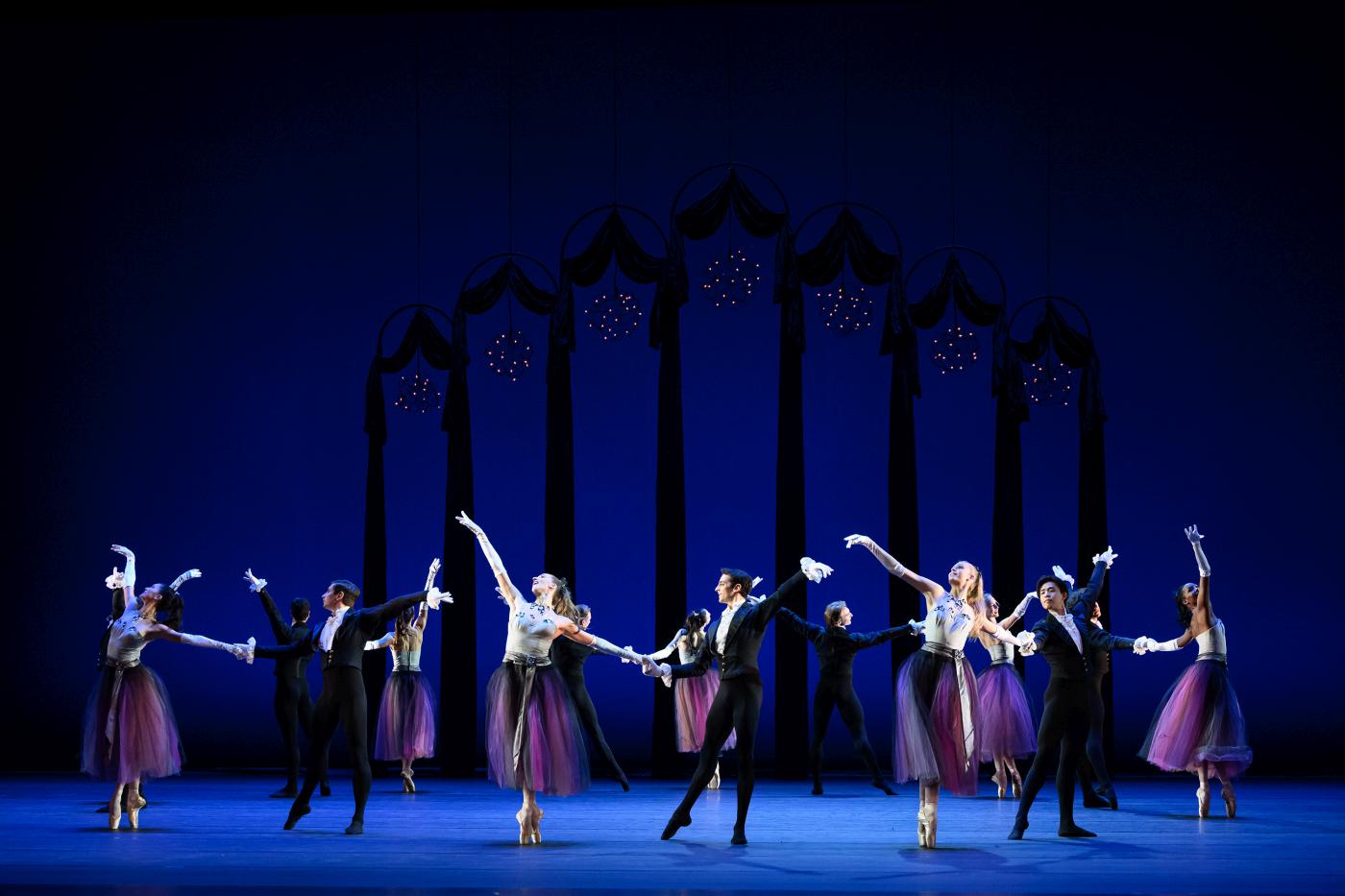XVIII Russian Open Ballet Competition Arabesque – 2024 named after Ekaterina Maximova
“Gala Concert”
Perm State Tchaikovsky Opera and Ballet Theatre
Perm, Russia
April 17, 2024 (live stream)
by Ilona Landgraf
Copyright © 2024 by Ilona Landgraf
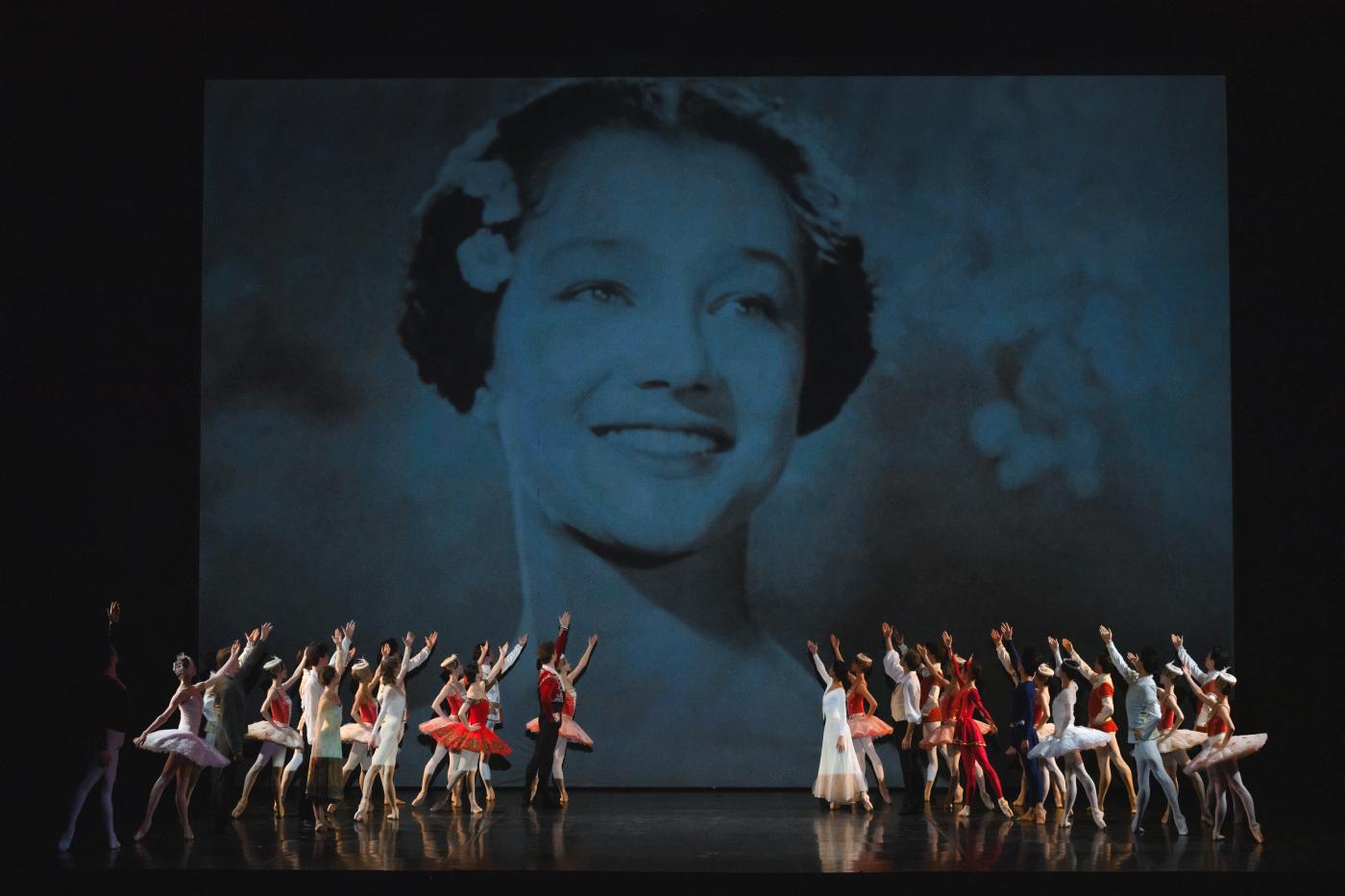 “Perm is remarkable in that it’s Ballet Lovers’ Society initiated the first Russian ballet competition,” stated Russia’s dance icon, Vladimir Vasiliev. Though it was mainly an event for young Russian dancers at its inauguration in 1988, four years later, the biannual Arabesque Competition welcomed participants from the U.S.A. and Japan. In 1996, the same Ballet Lovers’ Society coaxed Vasiliev and his wife, Ekaterina Maximova (1939-2009)—Russia’s most prestigious ballet couple—to lead the jury. (Notably, Arabesque has a two-tier jury consisting of renowned dancers and ballet and theater critics.) In addition, Vasiliev became its artistic director. This year’s run is dedicated to the 85th anniversary of the birth of Maximova.
“Perm is remarkable in that it’s Ballet Lovers’ Society initiated the first Russian ballet competition,” stated Russia’s dance icon, Vladimir Vasiliev. Though it was mainly an event for young Russian dancers at its inauguration in 1988, four years later, the biannual Arabesque Competition welcomed participants from the U.S.A. and Japan. In 1996, the same Ballet Lovers’ Society coaxed Vasiliev and his wife, Ekaterina Maximova (1939-2009)—Russia’s most prestigious ballet couple—to lead the jury. (Notably, Arabesque has a two-tier jury consisting of renowned dancers and ballet and theater critics.) In addition, Vasiliev became its artistic director. This year’s run is dedicated to the 85th anniversary of the birth of Maximova.
At the opening gala concert, director, Elena Zavershinskaya, recalled how Arabesque has grown: “Over the years, the spectrum of prizes increased thanks to generous donations and so did the amount of countries that participated. We used to have dancers from 8-9 countries and were quite happy with that. Seventy applicants were a big figure; eighty were many. Once we had one-hundred applicants and were so excited! Now, however, young talents from nineteen countries participate, among them dancers from twenty-three regions of Russia. This year we received a record-high of 266 applications!”
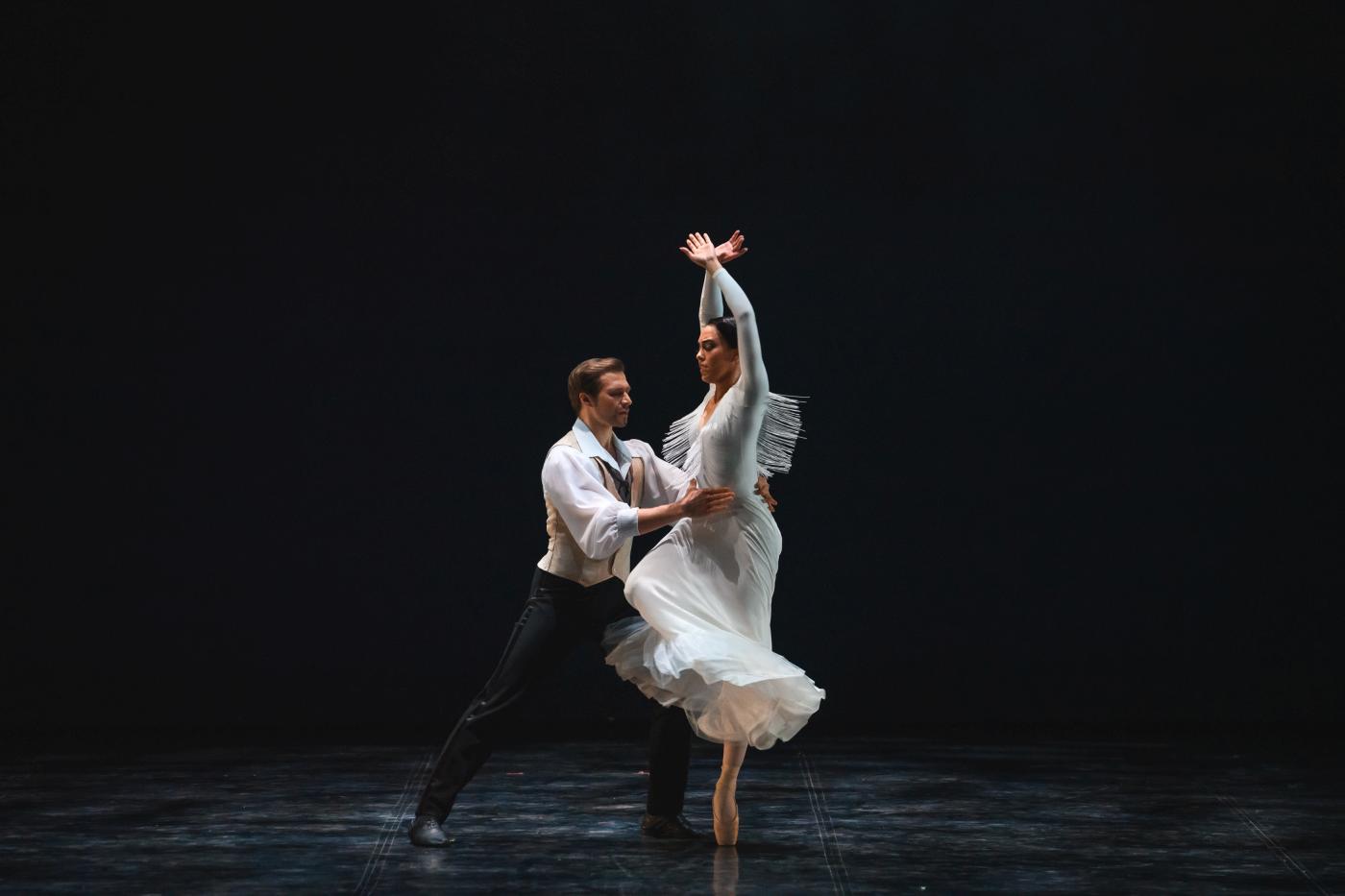
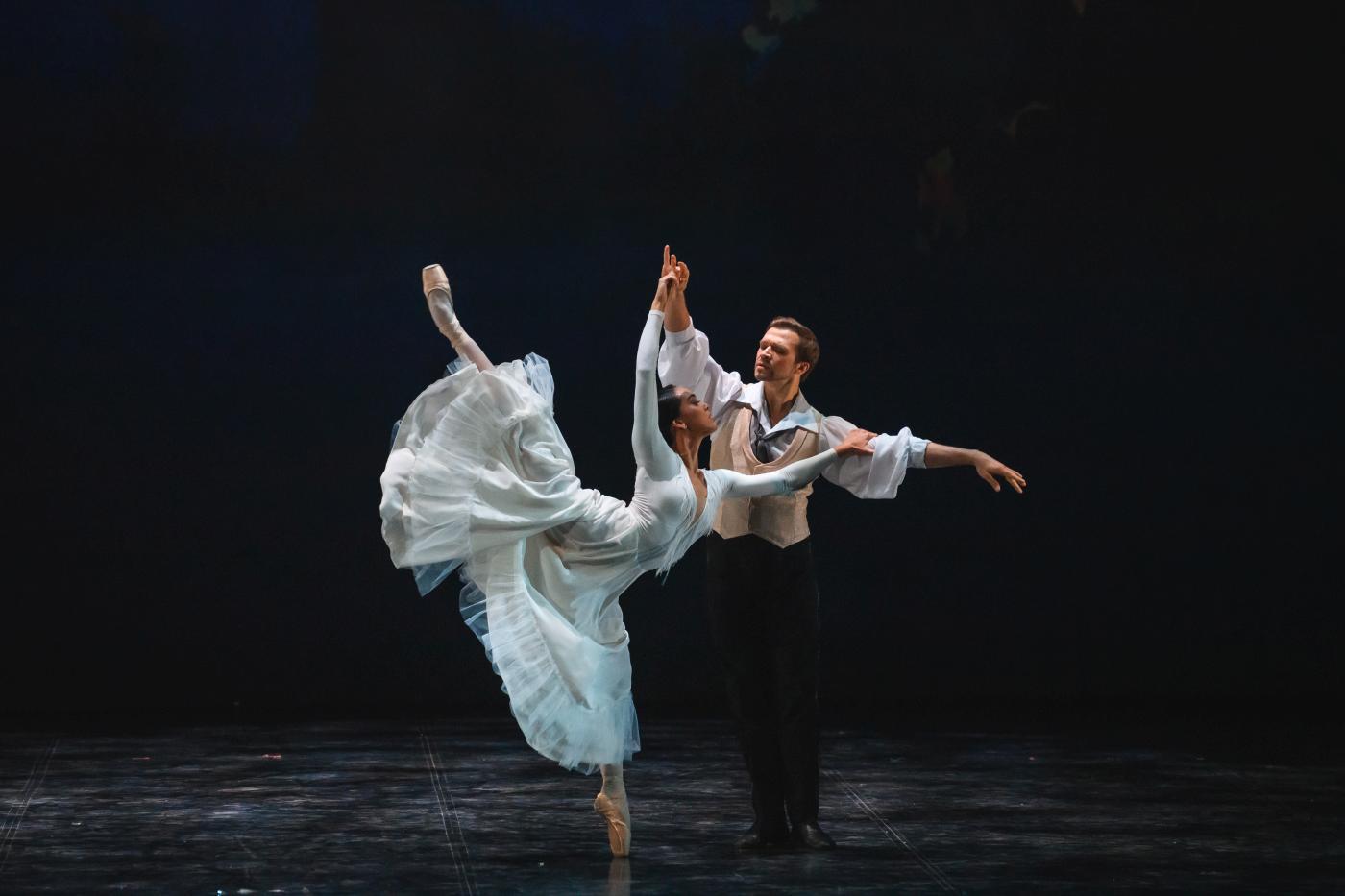 Two hundred young dancers were finally admitted. In the coming days, several rounds of performances (many of which are streamed live) will lead to the naming of the prize winners who will participate in a gala concert on April 28th.
Two hundred young dancers were finally admitted. In the coming days, several rounds of performances (many of which are streamed live) will lead to the naming of the prize winners who will participate in a gala concert on April 28th.
The gala assembled performances of former laureates and the mixed-genre production Rachmaninoff performed by the State Youth Song and Dance Ensemble “Altai.” Fortunately, Aleksandra Domracheva presented the live broadcast in not only Russian but also English. Nadezhda Rudakova hosted the program on stage. The minister of culture of the Perm region, Alla Platonova, and the chairman of the press jury, theater critic Sergey Korobkov, opened with words of welcome. Vasiliev, who suffered an injury in February during a Bolshoi Theatre gala in commemoration of his late wife, sent pre-recorded greetings. He will follow the competition via video conference.
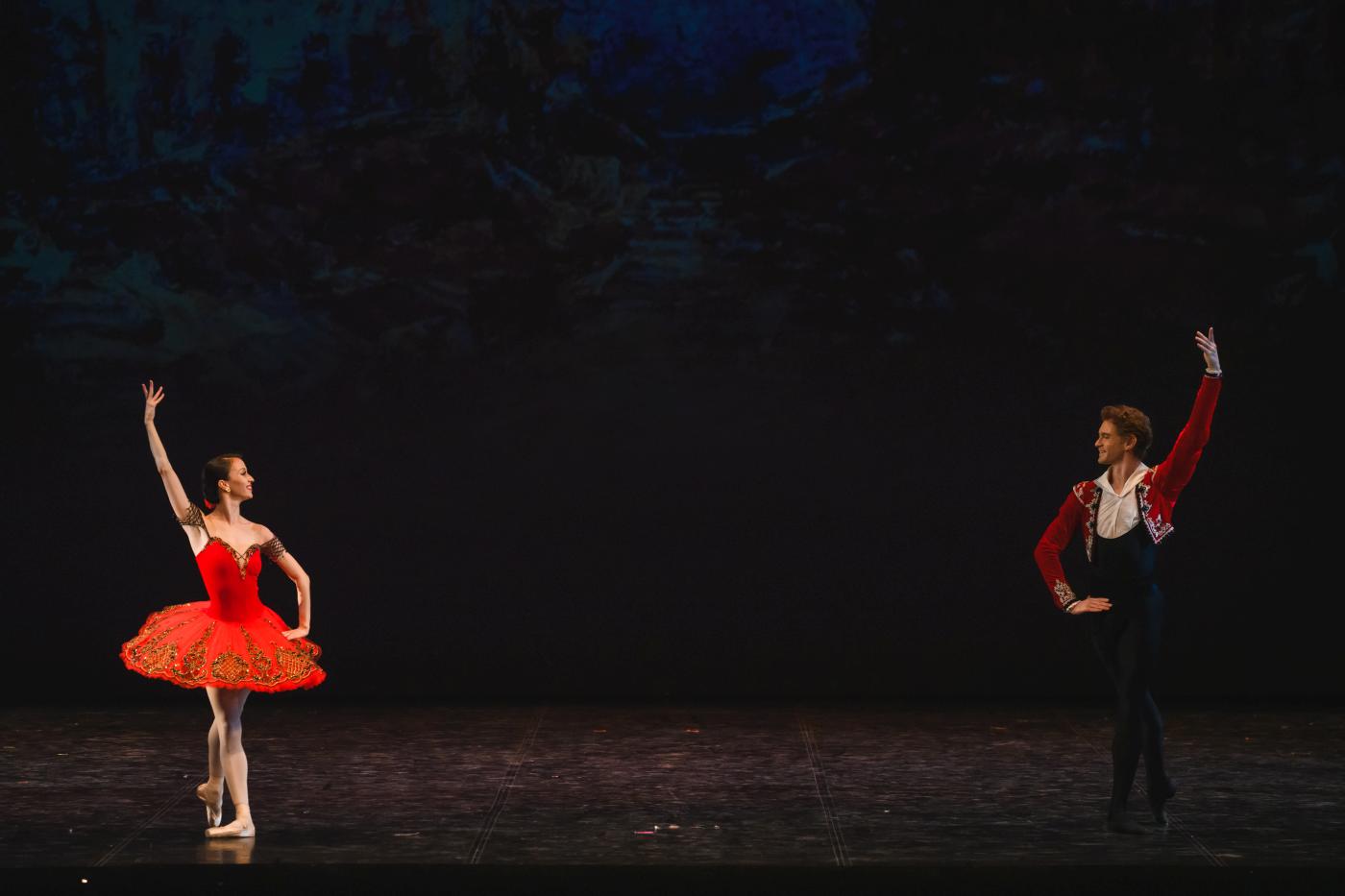
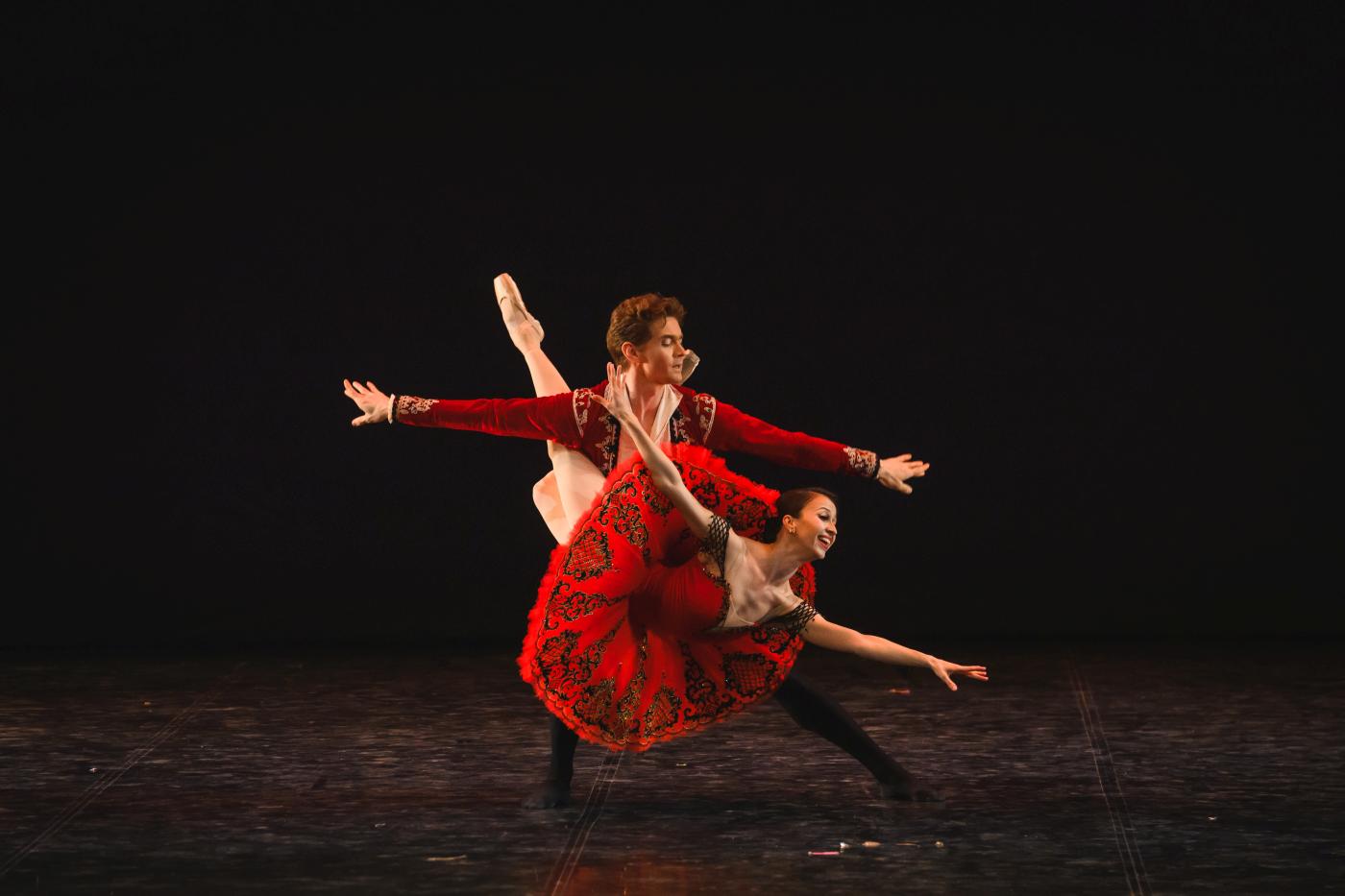 Some of the pas de deux shown at this gala were also danced in Perm. Amanda Gomes and Mikhail Timeav from the Tatar State Academic Opera and Ballet Theatre performed the same scene from Vasiliev’s Fragments of a Biography, but the slight tension that Gomes had shown on the Bolshoi’s stage was absent in Perm. She danced with a freedom that caused the emotions Vasiliev infused into the pas de deux to resonate strongly. As at the Bolshoi gala, the Mariinsky Ballet’s Renata Shakirova (who in the meantime was promoted to principal dancer) contributed a pas de deux from Don Quixote, this time dancing alongside her Mariinsky colleague Alexei Timofeyev. Conductor, Ivan Khudyakov-Vedenyapin, set the pace for Ludwig Minkus’s score slightly slower than his Moscow colleague, and the pas de deux was cut short. But as before, Shakirova garnished her movements with flashy accents as if to provide exclamation marks.
Some of the pas de deux shown at this gala were also danced in Perm. Amanda Gomes and Mikhail Timeav from the Tatar State Academic Opera and Ballet Theatre performed the same scene from Vasiliev’s Fragments of a Biography, but the slight tension that Gomes had shown on the Bolshoi’s stage was absent in Perm. She danced with a freedom that caused the emotions Vasiliev infused into the pas de deux to resonate strongly. As at the Bolshoi gala, the Mariinsky Ballet’s Renata Shakirova (who in the meantime was promoted to principal dancer) contributed a pas de deux from Don Quixote, this time dancing alongside her Mariinsky colleague Alexei Timofeyev. Conductor, Ivan Khudyakov-Vedenyapin, set the pace for Ludwig Minkus’s score slightly slower than his Moscow colleague, and the pas de deux was cut short. But as before, Shakirova garnished her movements with flashy accents as if to provide exclamation marks.
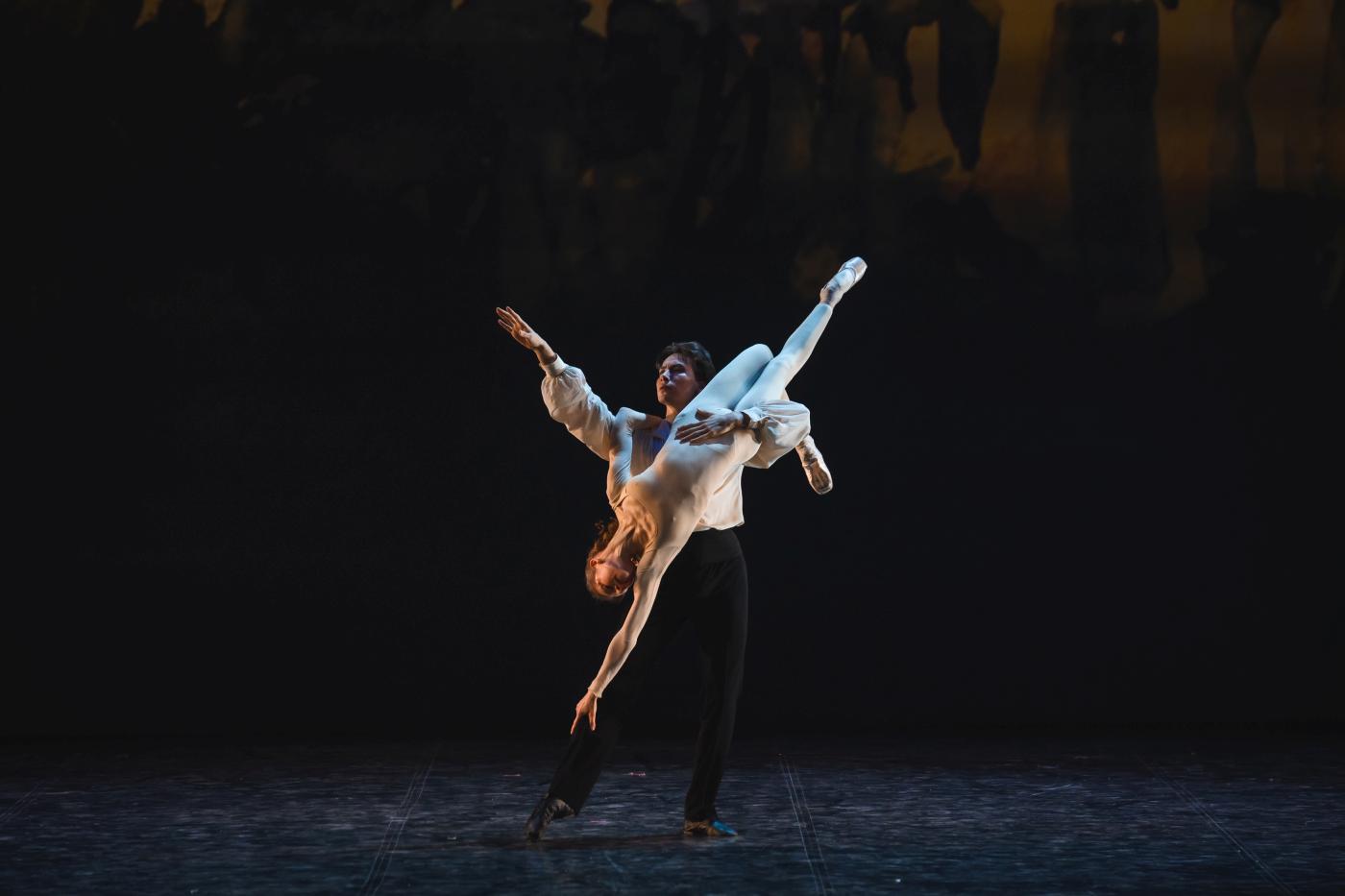
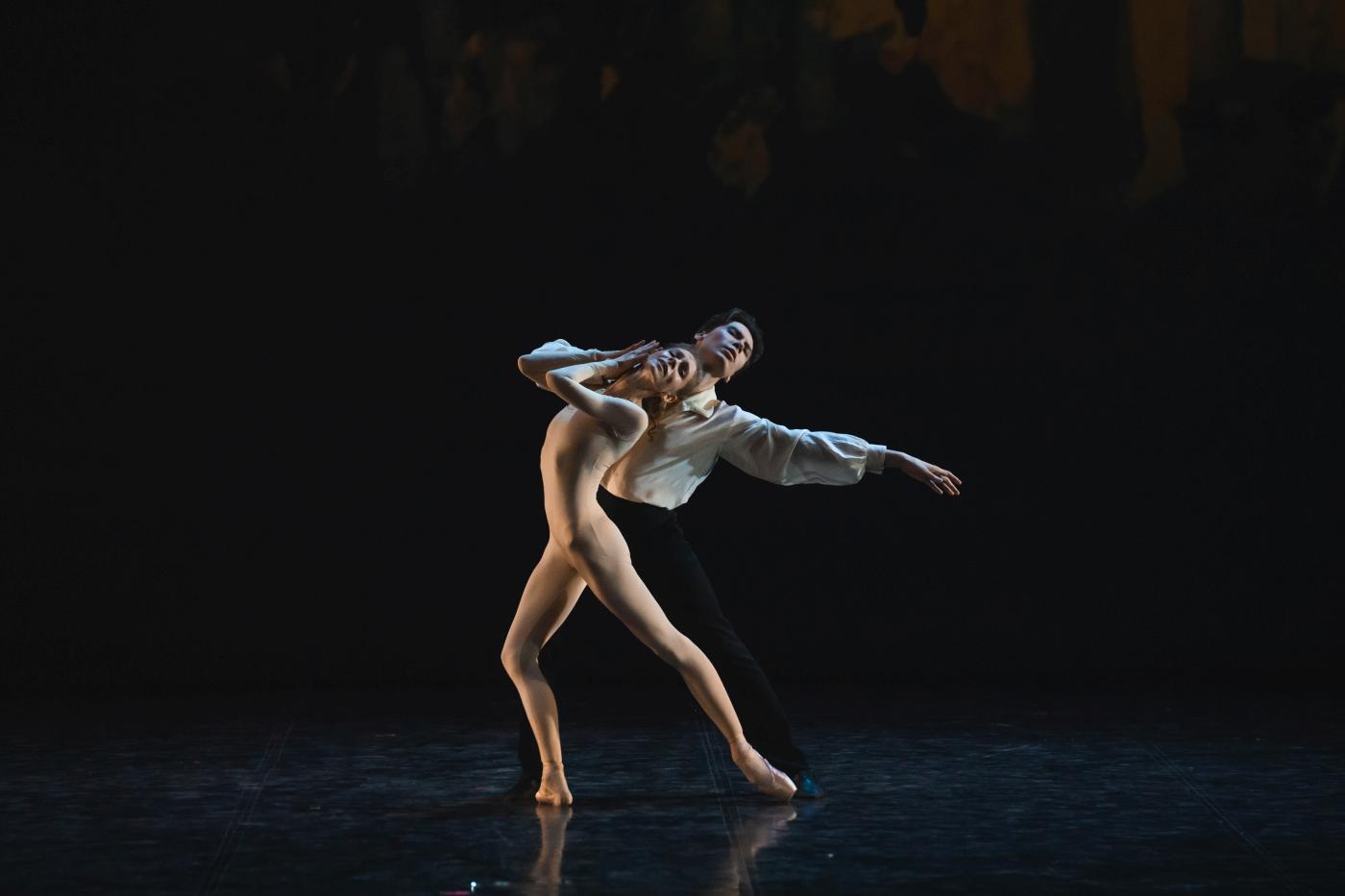 Tatiana Predeina and Alexander Kochetkov from the Chelyabinsk Opera and Ballet Theatre performed Vasiliev’s Elegy (which had been danced at the Bolshoi’s gala by another cast) but failed at one of its many challenging lifts. Perhaps that was why Kochetkov looked displeased at the curtain call. In my opinion, though, witnessing the pros blunder and simply go on was a great example for the young dancers. Predeina, by the way, doubles as a member of the jury.
Tatiana Predeina and Alexander Kochetkov from the Chelyabinsk Opera and Ballet Theatre performed Vasiliev’s Elegy (which had been danced at the Bolshoi’s gala by another cast) but failed at one of its many challenging lifts. Perhaps that was why Kochetkov looked displeased at the curtain call. In my opinion, though, witnessing the pros blunder and simply go on was a great example for the young dancers. Predeina, by the way, doubles as a member of the jury.
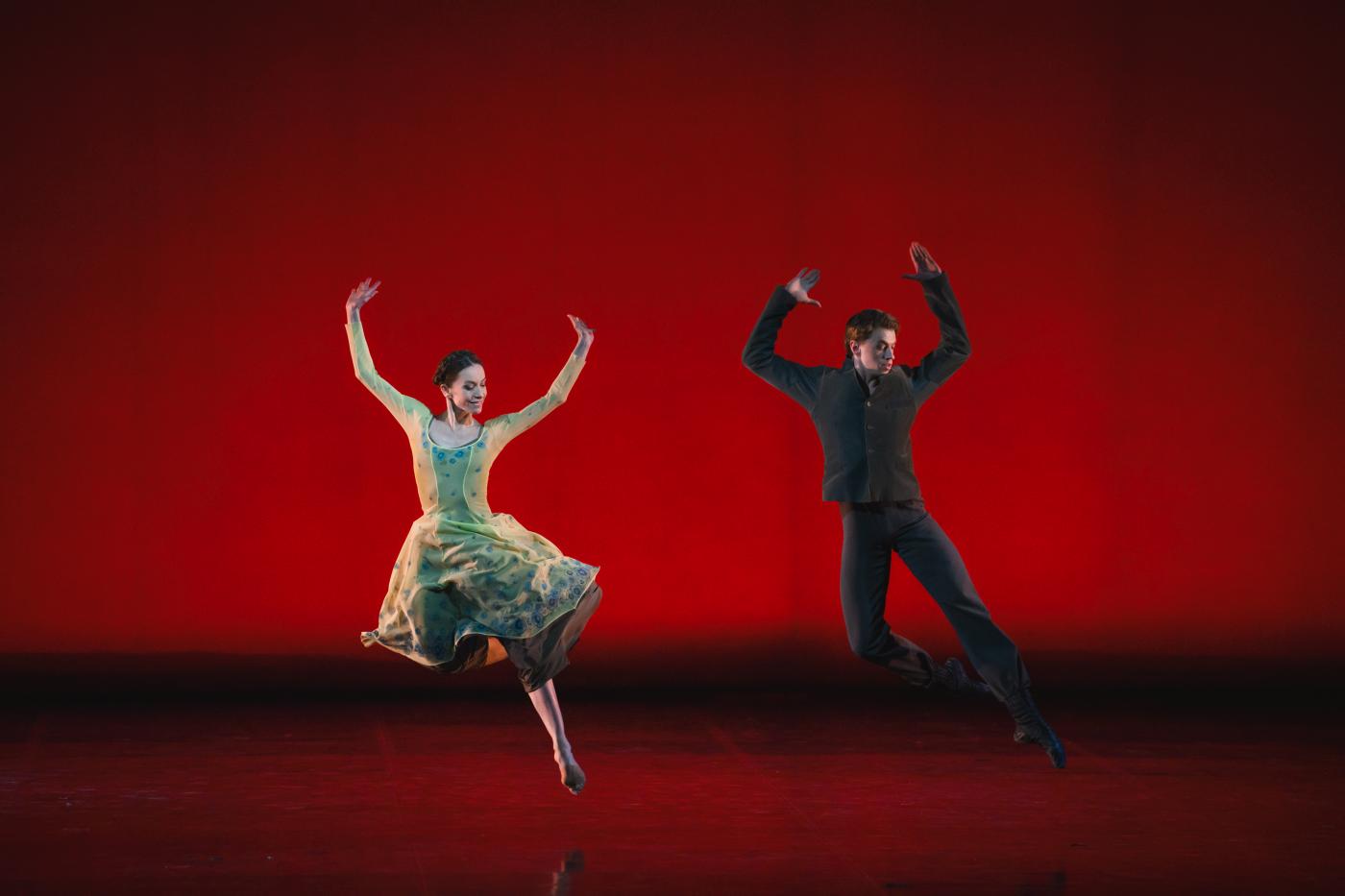
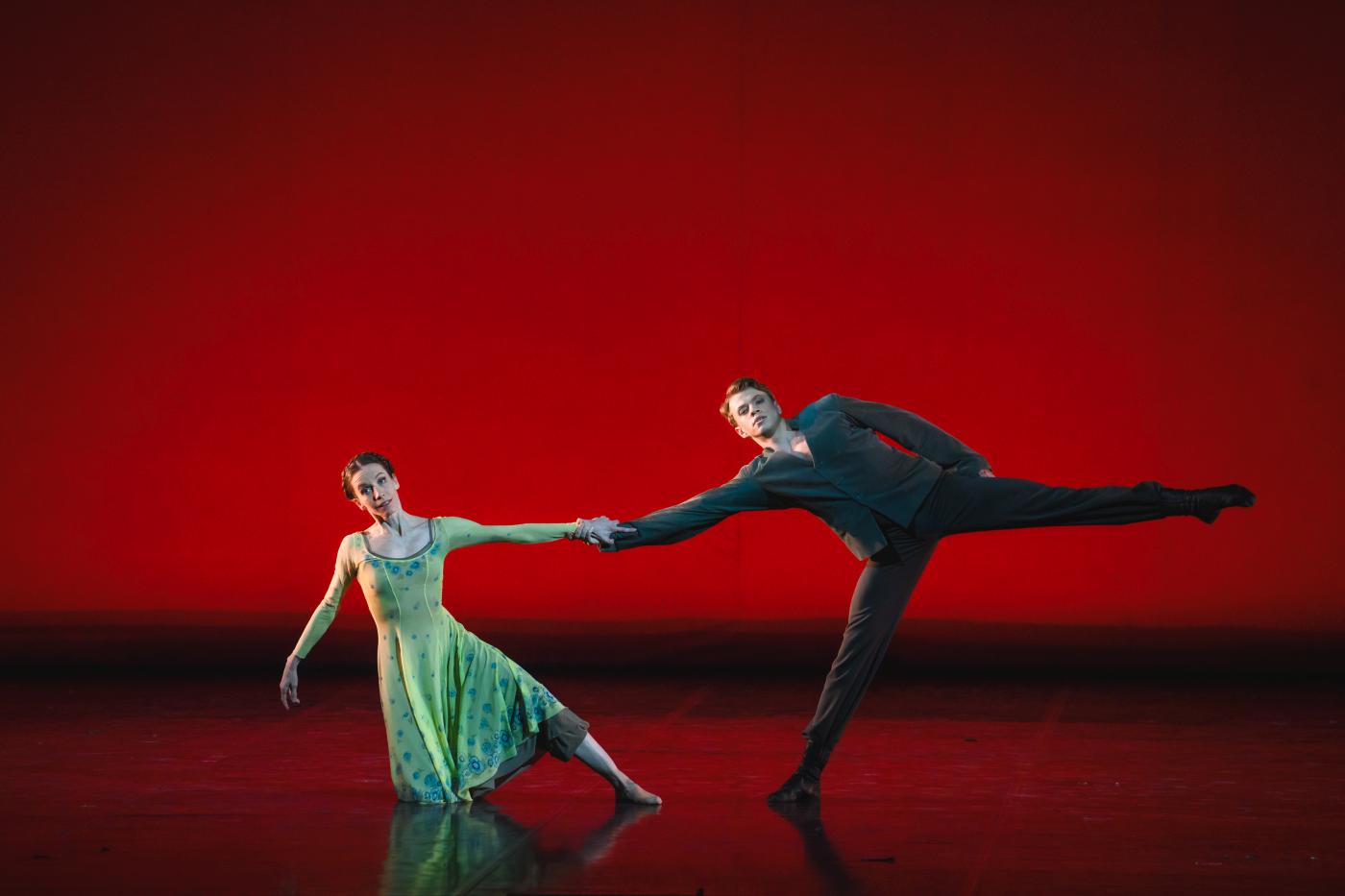 The Bolshoi Ballet’s former principal, Marianna Rhyzkina, served in three roles: dancer, choreographer, and member of the jury. She performed her own pas de deux, Cadrilliana (set to music by Rodion Shchedrin), alongside the Bolshoi’s Pavel Smirnov, which featured the relationship of a restless couple. The source of the unrest was the young woman Rhyzkina depicted—an endearing and playful but also volatile character. Smirnov played along, was tolerant, and paid attention but finally reined Rhyzkina in by wrapping her up in her stretch dress as if it were a straitjacket. Her awkwardly hunched posture reminded me of Petrushka.
The Bolshoi Ballet’s former principal, Marianna Rhyzkina, served in three roles: dancer, choreographer, and member of the jury. She performed her own pas de deux, Cadrilliana (set to music by Rodion Shchedrin), alongside the Bolshoi’s Pavel Smirnov, which featured the relationship of a restless couple. The source of the unrest was the young woman Rhyzkina depicted—an endearing and playful but also volatile character. Smirnov played along, was tolerant, and paid attention but finally reined Rhyzkina in by wrapping her up in her stretch dress as if it were a straitjacket. Her awkwardly hunched posture reminded me of Petrushka.
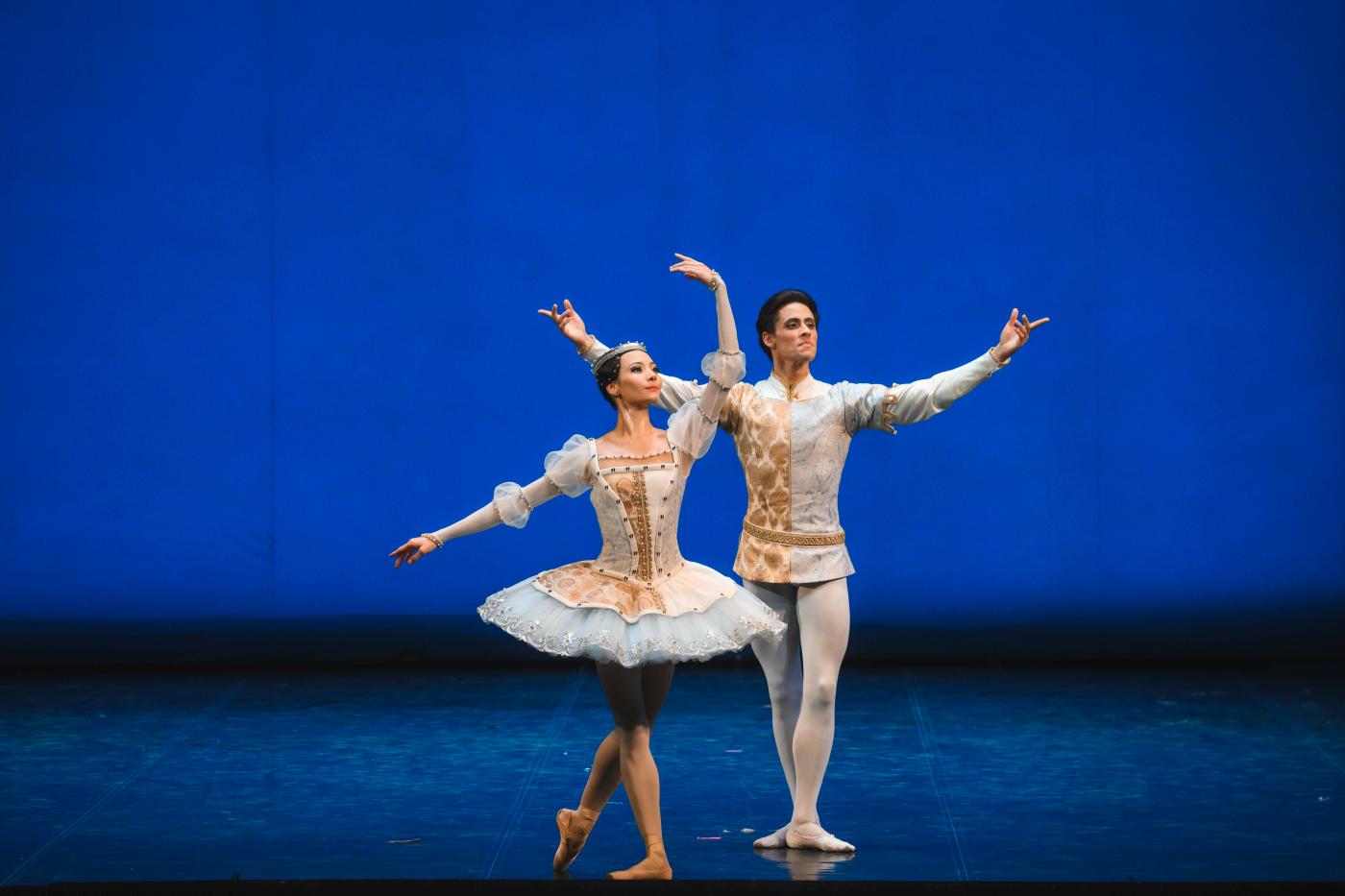
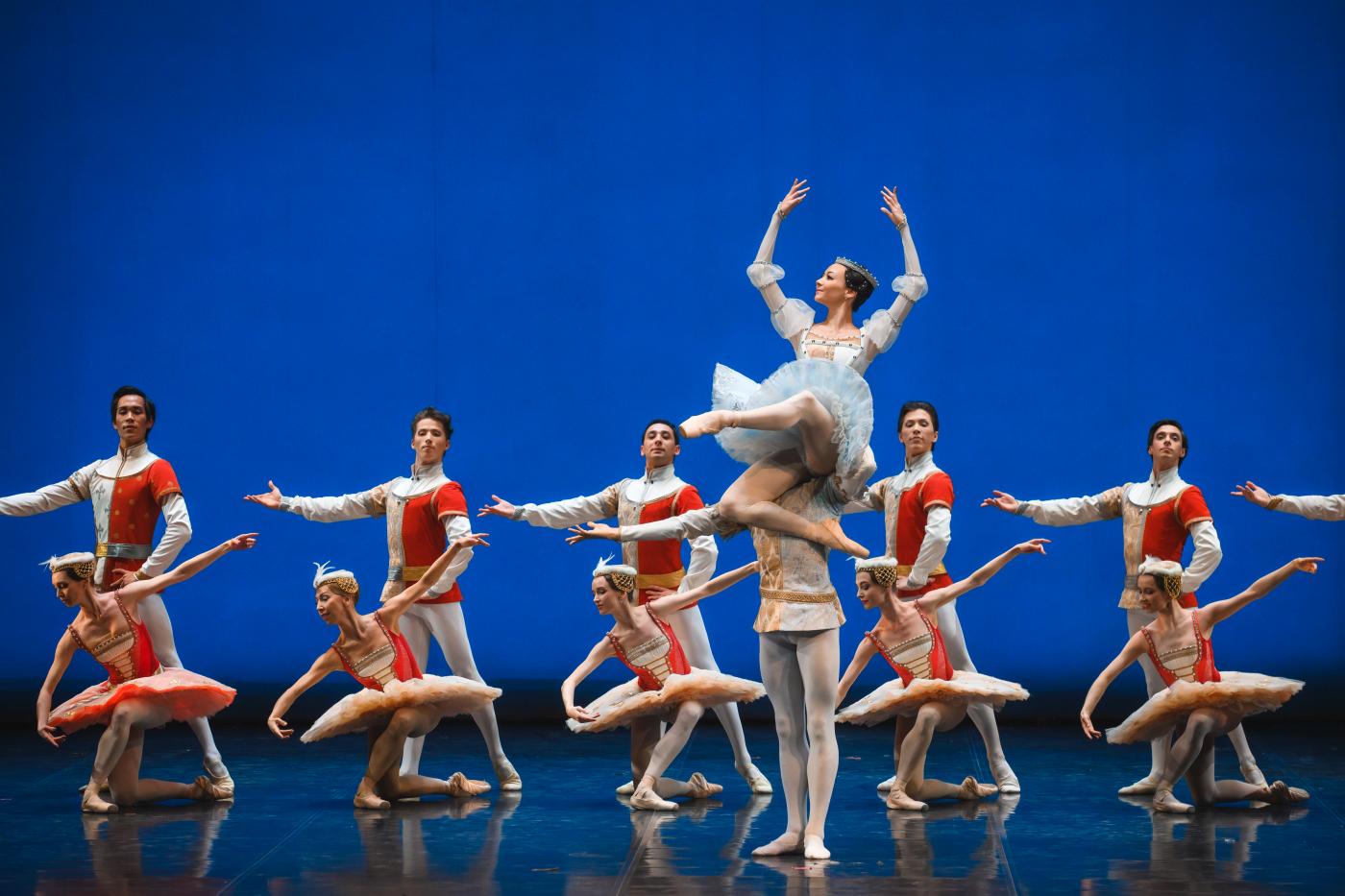 The ballet company of the Perm Theatre contributed the Grand Pas from Raymonda, led by Bulgan Rentsendorj (the calm of her mature Raymonda was spellbinding) and Gabriel Lopes as the resolute Jean de Brienne. They were accompanied by a corps whose harmony and proficiency made me want to watch the company more often.
The ballet company of the Perm Theatre contributed the Grand Pas from Raymonda, led by Bulgan Rentsendorj (the calm of her mature Raymonda was spellbinding) and Gabriel Lopes as the resolute Jean de Brienne. They were accompanied by a corps whose harmony and proficiency made me want to watch the company more often.
Liriy Wakabayashi and Kubanych Shamakeev from the Chelyabinsk State Academic Opera and Ballet Theater performed the miniature Mugham, which also stirred my curiosity. Their serene, often sculptural movements seemed to convey a mythical story, but I’m not familiar with the Azerbaijani poetry upon which Rafiga Akhundova and Maksud Mammadov based their choreography.
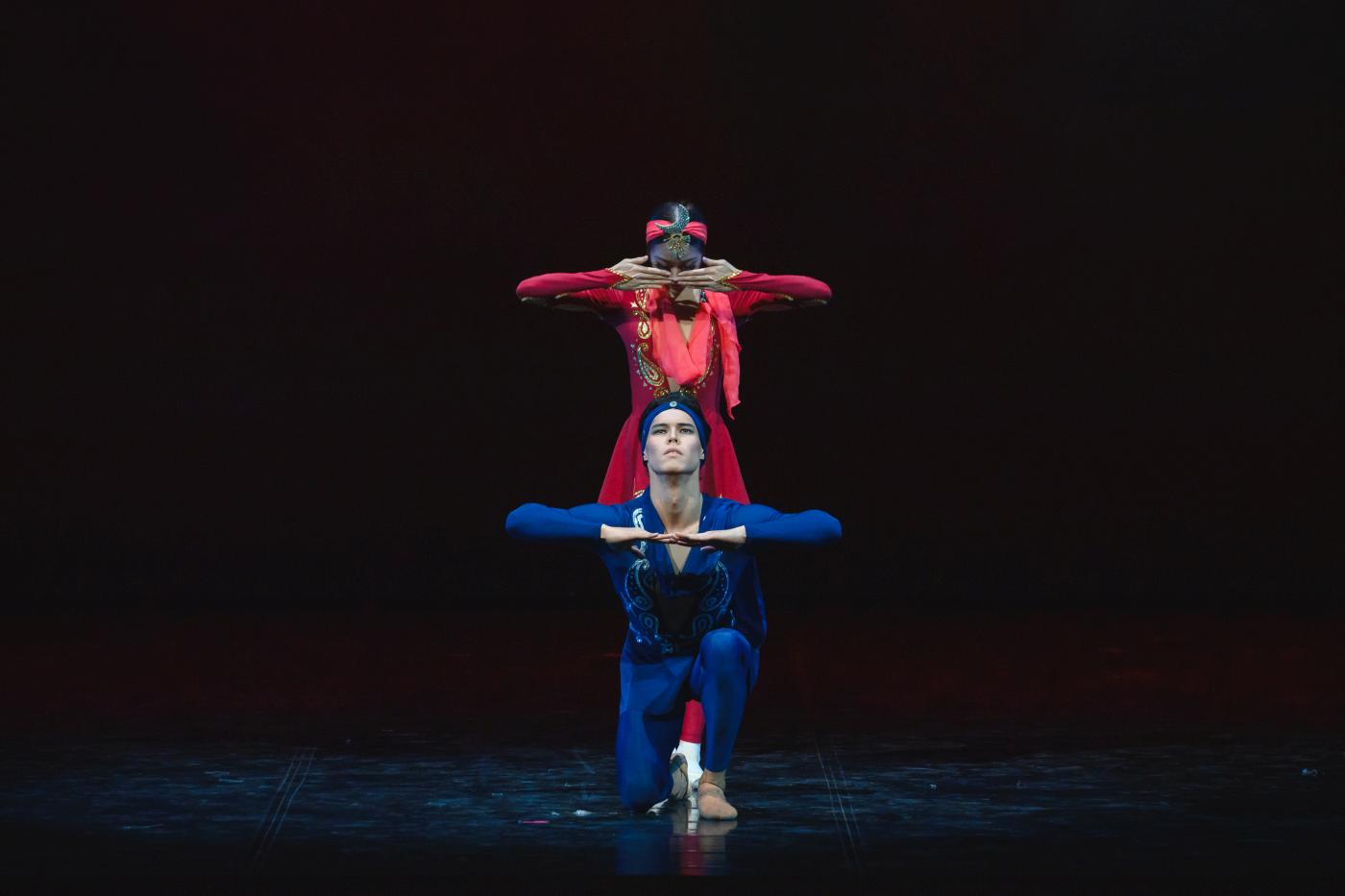
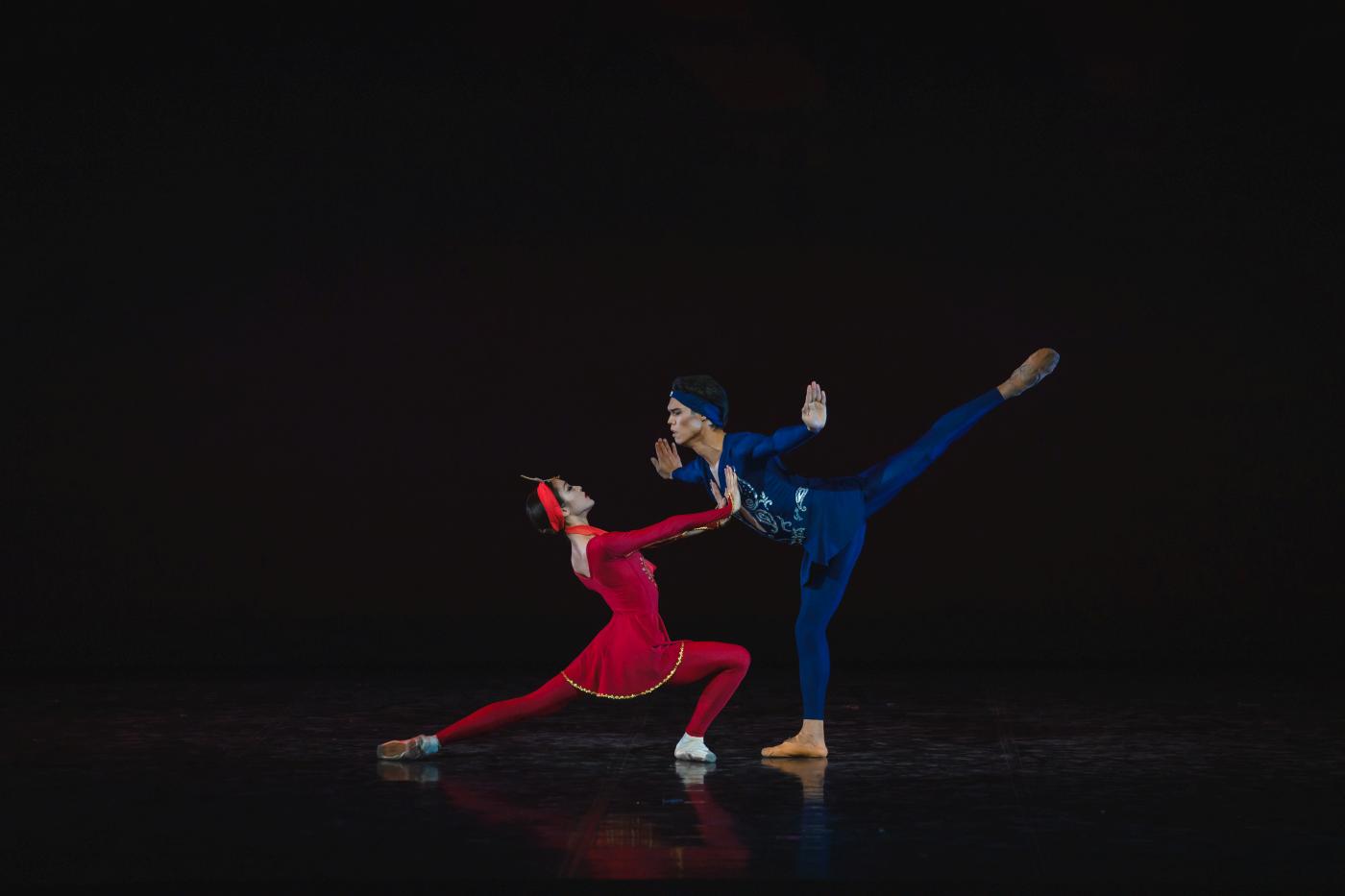 I do know, however, Swan Lake and can testify to the superb Odette danced by the Mariinsky Theatre’s Valeria Kuznetsova. What a phenomenal plasticity! I’ve rarely seen such a perfect hybrid of swan and human. Her Siegfried was danced by Even Capitaine (also from the Mariinsky Theatre).
I do know, however, Swan Lake and can testify to the superb Odette danced by the Mariinsky Theatre’s Valeria Kuznetsova. What a phenomenal plasticity! I’ve rarely seen such a perfect hybrid of swan and human. Her Siegfried was danced by Even Capitaine (also from the Mariinsky Theatre).
The three-part Rachmaninoff (2022) shown in the second half of the gala was choreographed by Perm-based Alexey Rastorguev (also a member of the Arabesque jury) and directed by Vasiliev. As in his own choreographies, Vasiliev also provided the pictorial set design.
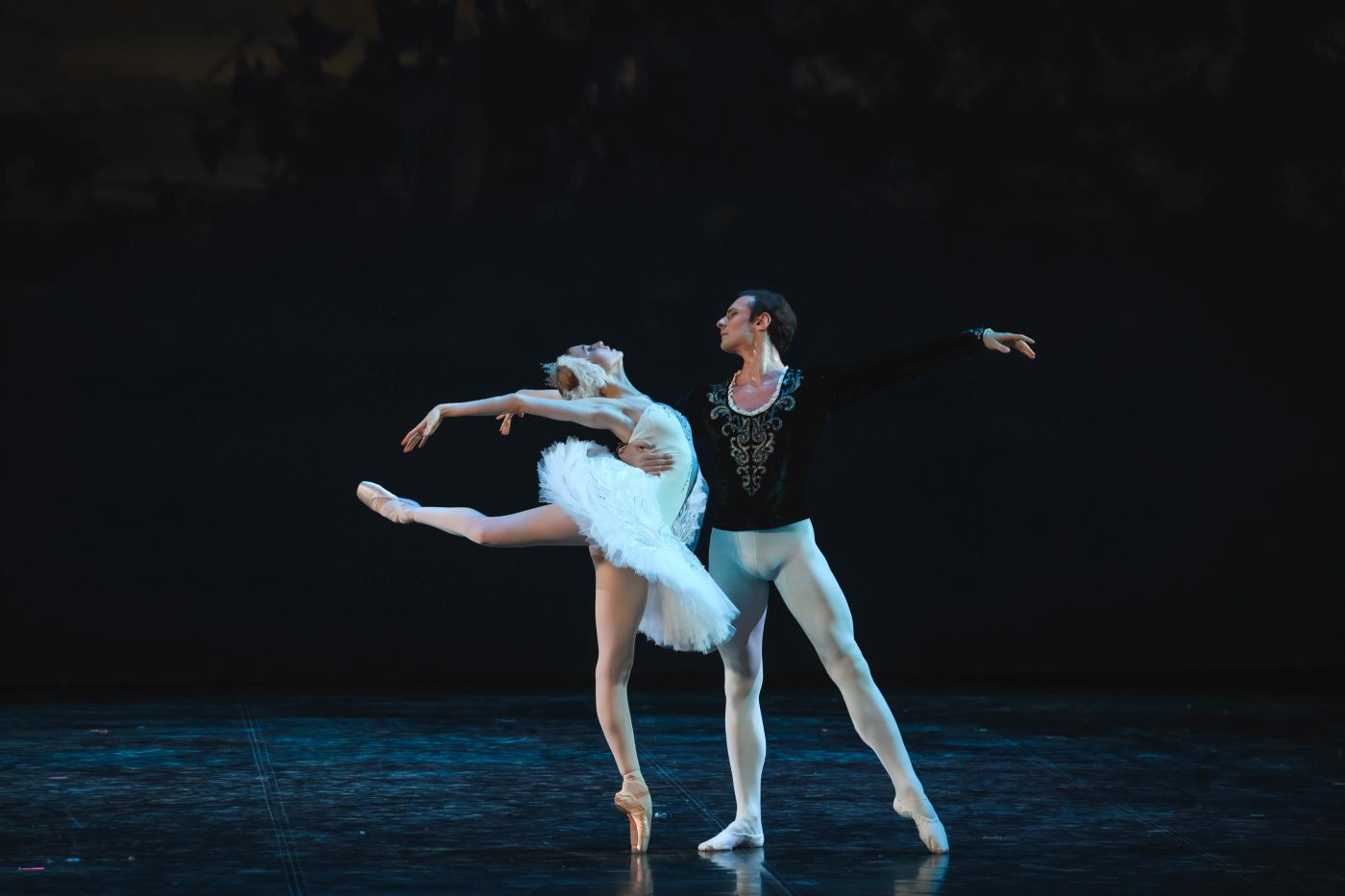
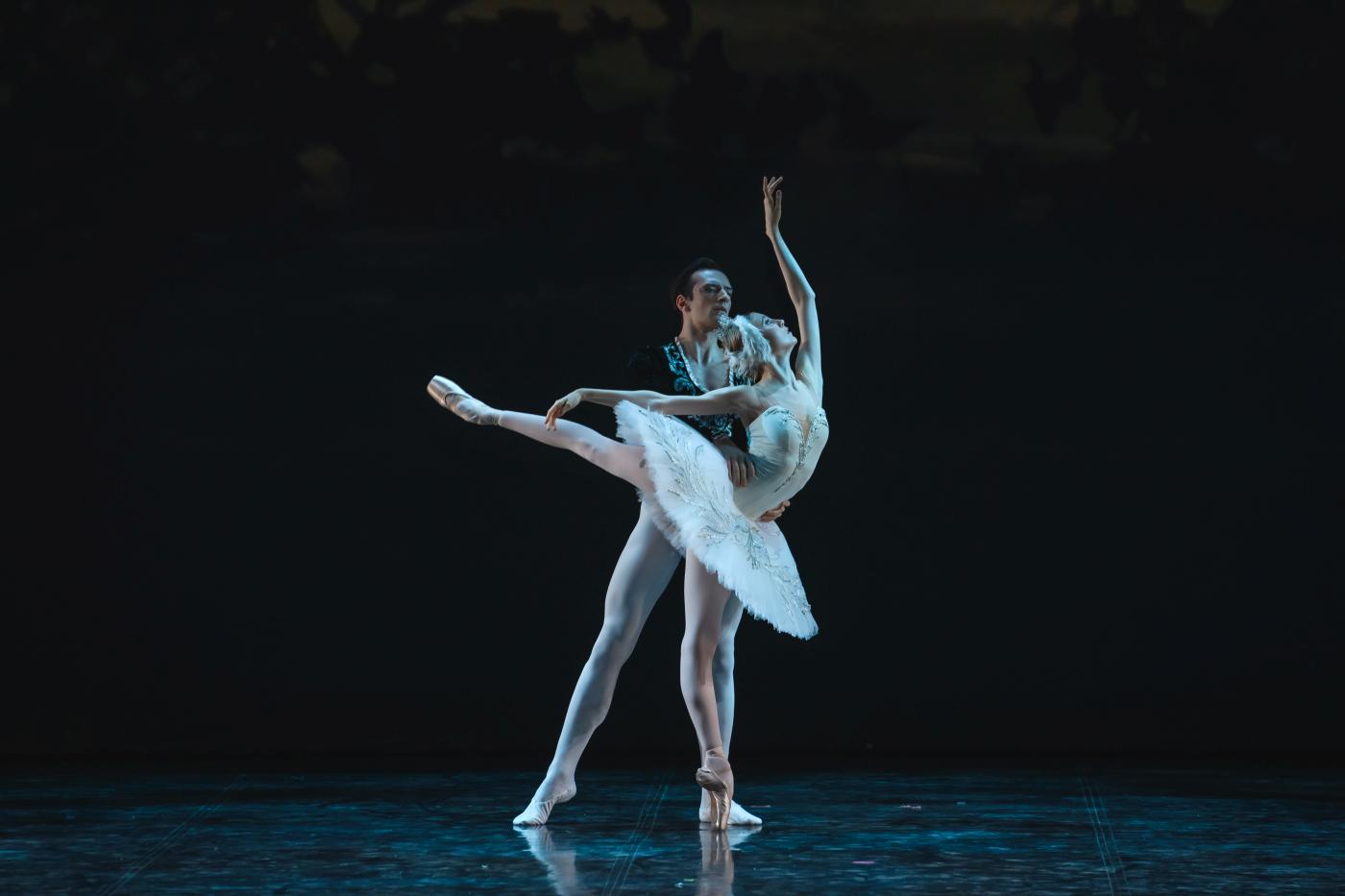 The piece, set to Rachmaninoff’s second piano concerto, is categorized as a choreographic fantasy and hence doesn’t attempt to retell Rachmaninoff’s life. It revolves around two men (Egor Borozikov and Artem Rudnichenko), one of them playing Rachmaninoff, the other perhaps embodying his alter ego or various friends and fellow composers. Part I (Hope) finished with a flutter of paper snippets raining down on Rachmaninoff. After he left with the crowd of fans, a young boy and a girl stayed behind amid the paper snippets. In Part II (Love), Rachmaninoff and his wife sat motionless around an occasionally creaking gramophone, their two daughters playing with the paper snippets.
The piece, set to Rachmaninoff’s second piano concerto, is categorized as a choreographic fantasy and hence doesn’t attempt to retell Rachmaninoff’s life. It revolves around two men (Egor Borozikov and Artem Rudnichenko), one of them playing Rachmaninoff, the other perhaps embodying his alter ego or various friends and fellow composers. Part I (Hope) finished with a flutter of paper snippets raining down on Rachmaninoff. After he left with the crowd of fans, a young boy and a girl stayed behind amid the paper snippets. In Part II (Love), Rachmaninoff and his wife sat motionless around an occasionally creaking gramophone, their two daughters playing with the paper snippets.
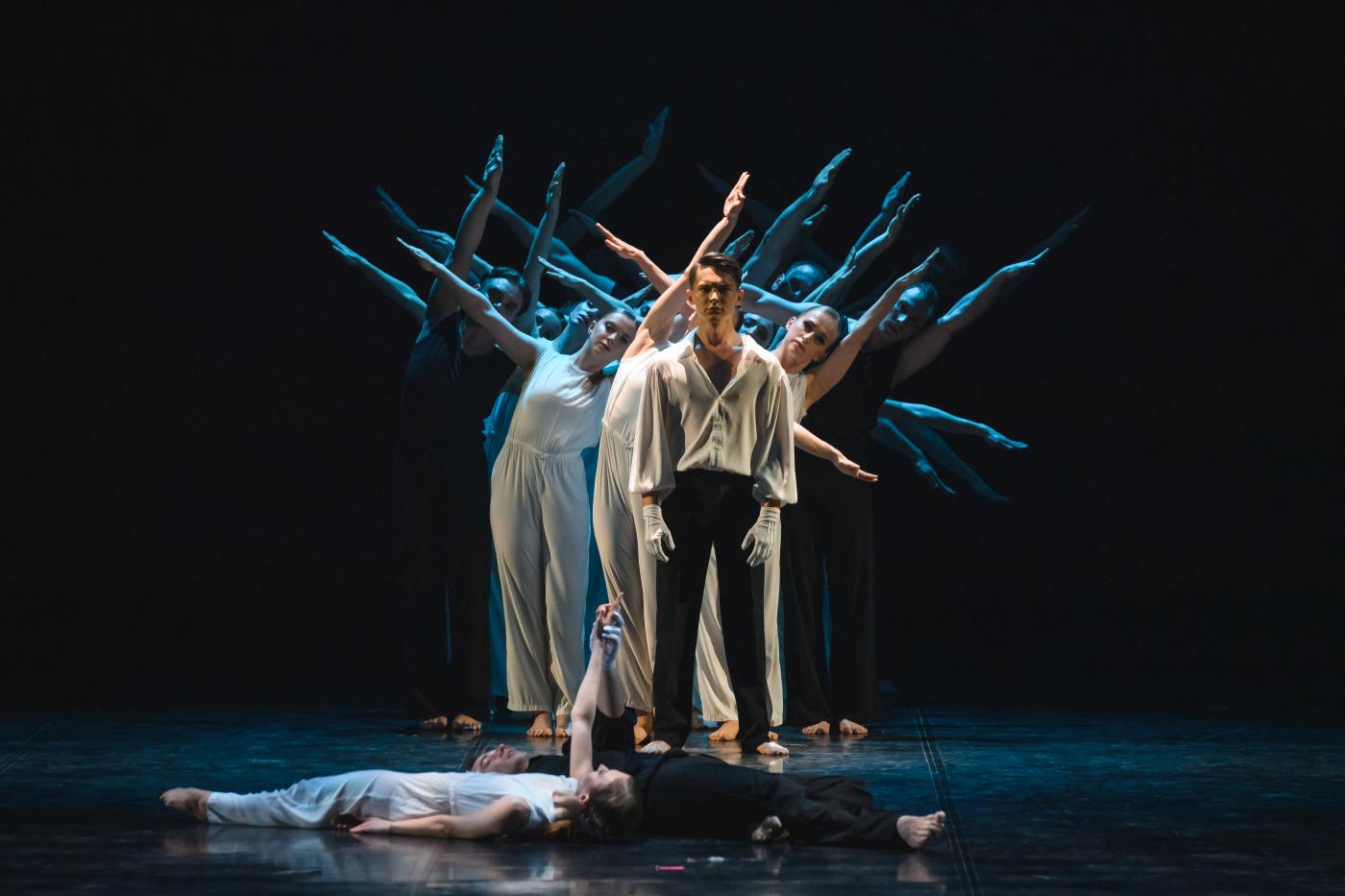
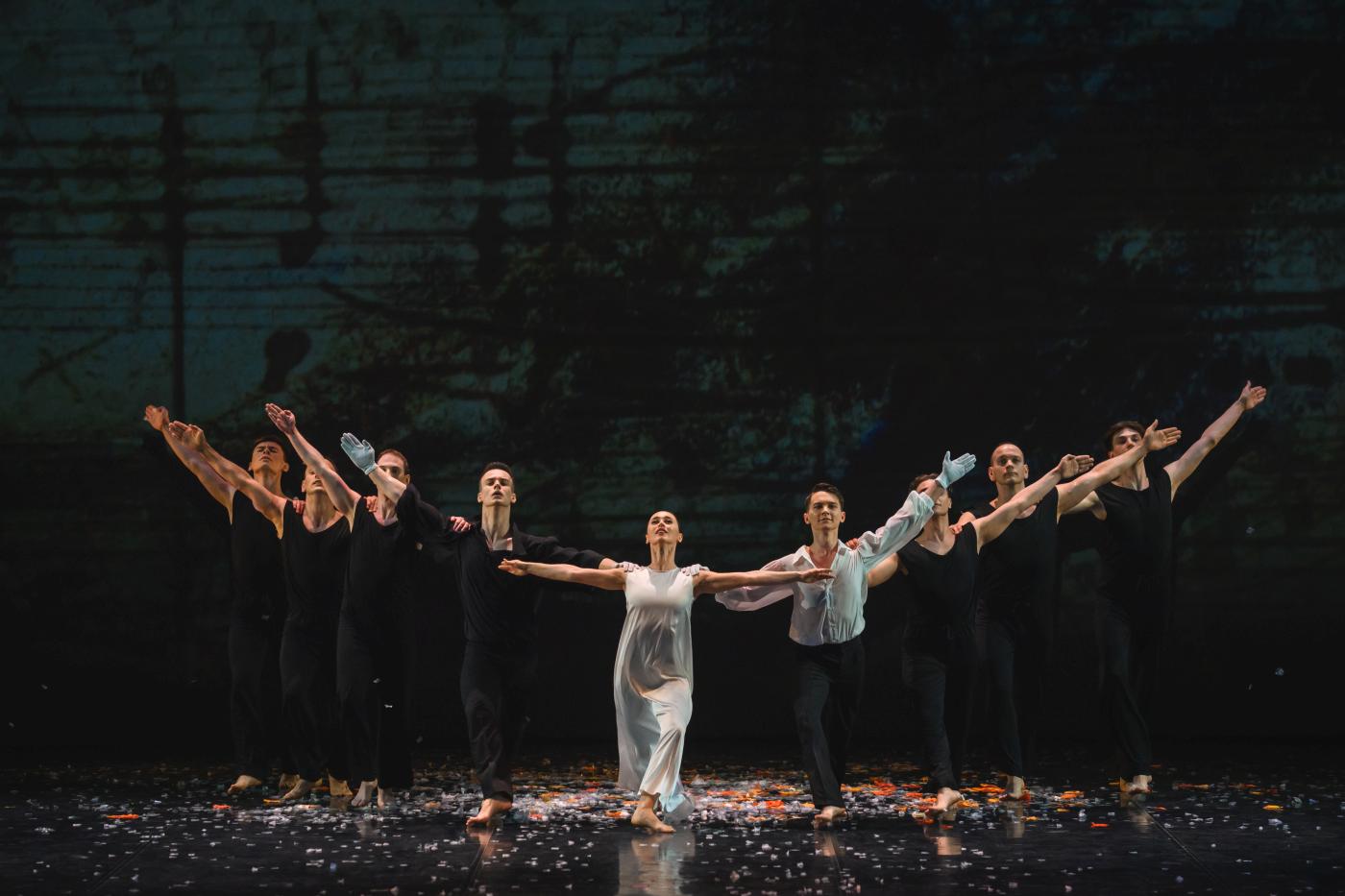 Green apples (unripe ideas?) were handed around until a red-gloved woman lured two men with a red apple as if she were the snake in the Garden of Eden. The aggression she sowed soon segued to idyllic country life. Falling autumn leaves indicated that Rachmaninoff’s life was in its later stage. In Part III (Faith), a muse dropped sheets of music in front of the composer’s feet, guiding him toward a grand, concert-like finale that represented the completion of his career.
Green apples (unripe ideas?) were handed around until a red-gloved woman lured two men with a red apple as if she were the snake in the Garden of Eden. The aggression she sowed soon segued to idyllic country life. Falling autumn leaves indicated that Rachmaninoff’s life was in its later stage. In Part III (Faith), a muse dropped sheets of music in front of the composer’s feet, guiding him toward a grand, concert-like finale that represented the completion of his career.
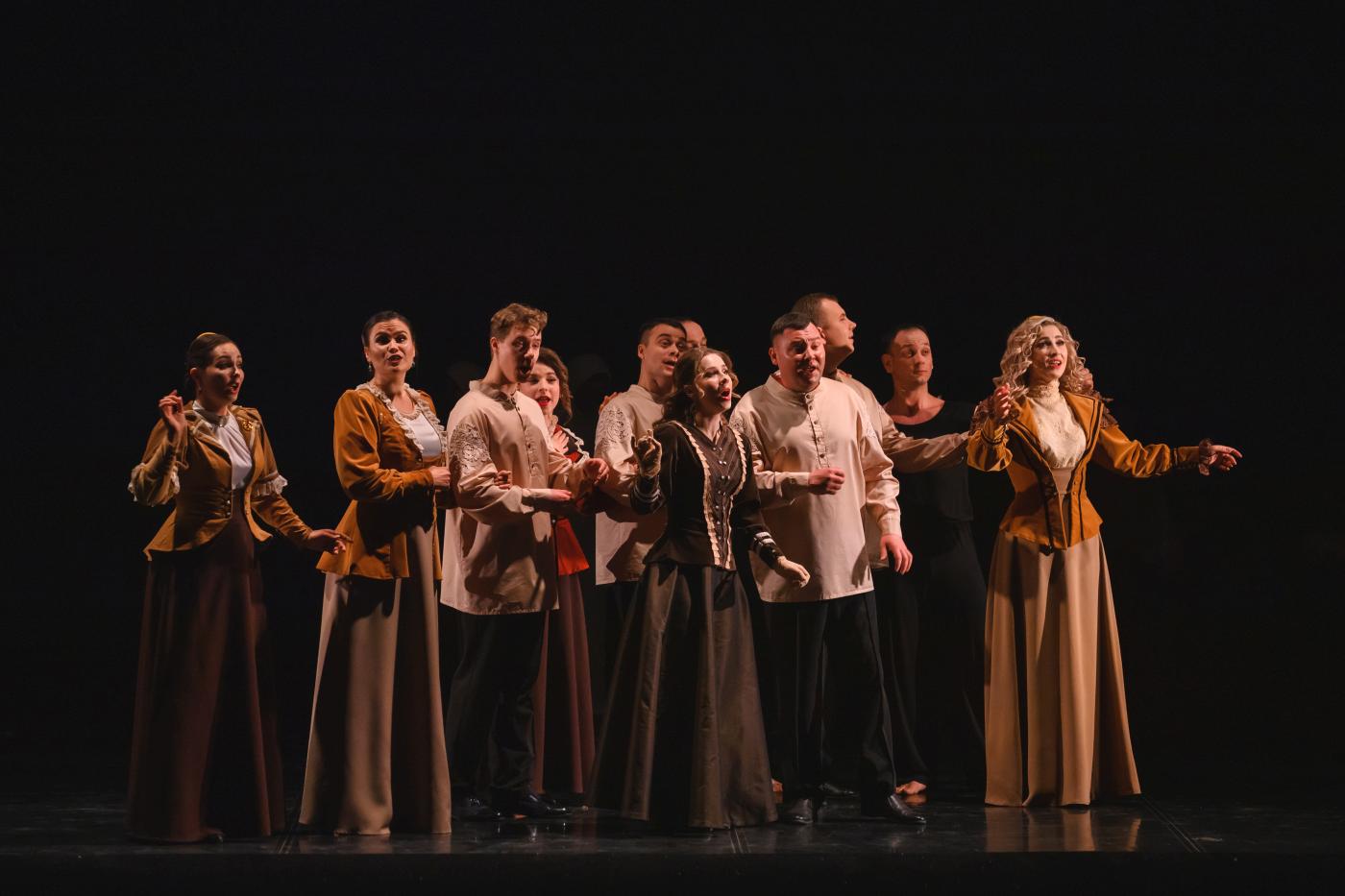
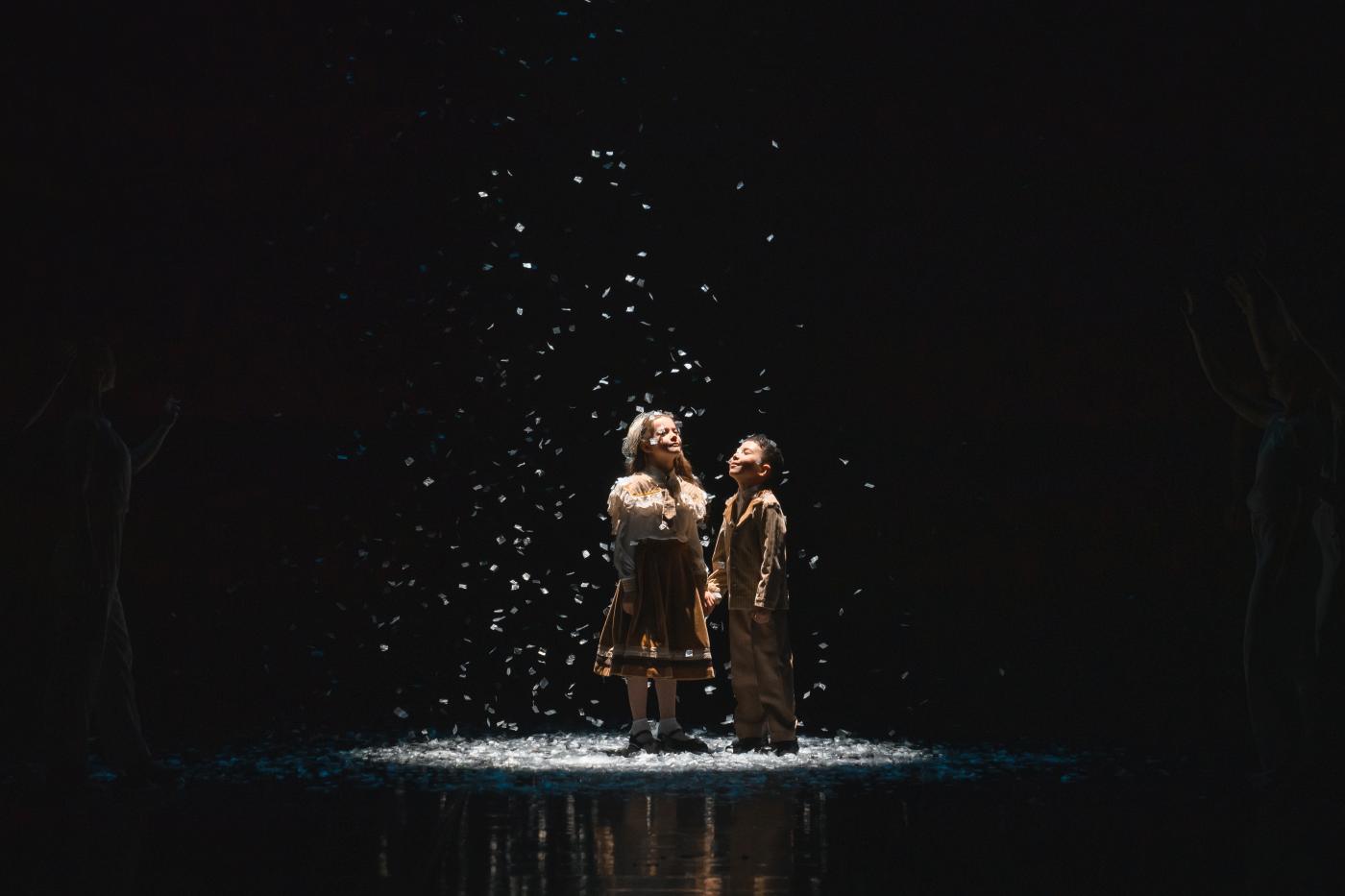 The corps, clad in black-and-white colored costumes designed by Gennady Ostashev, portrayed piano keys (ingeniously set in motion by Rastorguev), good and evil forces, and family and arts folk. I especially liked that Rastorguev included singers who performed between the three parts and mingled with the dancers in the finale.
The corps, clad in black-and-white colored costumes designed by Gennady Ostashev, portrayed piano keys (ingeniously set in motion by Rastorguev), good and evil forces, and family and arts folk. I especially liked that Rastorguev included singers who performed between the three parts and mingled with the dancers in the finale.
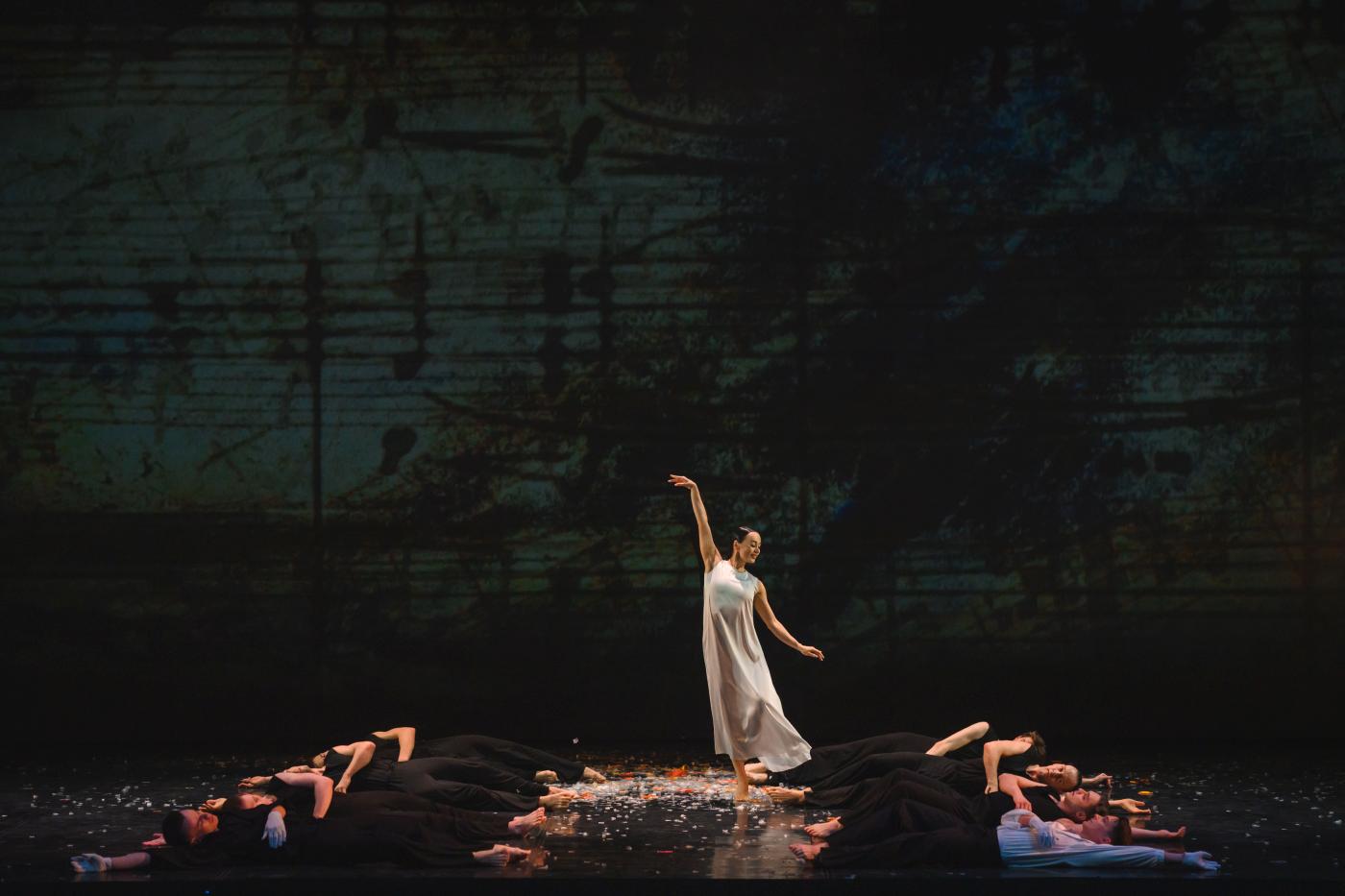
| Links: | Website of the Russian Open Ballet Competition Arabesque | |
| Website of the Perm State Tchaikovsky Opera and Ballet Theatre | ||
| Photos: | 1. | Ensemble, Gala Concert of the Ballet Competition Arabesque 2024 |
| 2. | Amanda Gomes and Mikhail Timeav, “Fragments of a Biography” by Vladimir Vasiliev, Gala Concert of the Ballet Competition Arabesque 2024 | |
| 3. | Mikhail Timeav and Amanda Gomes, “Fragments of a Biography” by Vladimir Vasiliev, Gala Concert of the Ballet Competition Arabesque 2024 | |
| 4. | Renata Shakirova (Kitri) and Alexei Timofeyev (Basilio), “Don Quixote” by Alexander Gorsky, Gala Concert of the Ballet Competition Arabesque 2024 | |
| 5. | Renata Shakirova (Kitri) and Alexei Timofeyev (Basilio), “Don Quixote” by Alexander Gorsky, Gala Concert of the Ballet Competition Arabesque 2024 | |
| 6. | Tatiana Predeina and Alexander Kochetkov, “Elegy” by Vladimir Vasiliev, Gala Concert of the Ballet Competition Arabesque 2024 | |
| 7. | Tatiana Predeina and Alexander Kochetkov, “Elegy” by Vladimir Vasiliev, Gala Concert of the Ballet Competition Arabesque 2024 | |
| 8. | Marianna Rhyzkina and Pavel Smirnov, “Cadrilliana” by Marianna Rhyzkina, Gala Concert of the Ballet Competition Arabesque 2024 | |
| 9. | Marianna Rhyzkina and Pavel Smirnov, “Cadrilliana” by Marianna Rhyzkina, Gala Concert of the Ballet Competition Arabesque 2024 | |
| 10. | Bulgan Rentsendorj (Raymonda), Gabriel Lopes (Jean de Brienne), and ensemble; Grand Pas from “Raymonda” by Marius Petipa, Gala Concert of the Ballet Competition Arabesque 2024 | |
| 11. | Bulgan Rentsendorj (Raymonda) and Gabriel Lopes (Jean de Brienne), Grand Pas from “Raymonda” by Marius Petipa, Gala Concert of the Ballet Competition Arabesque 2024 |
|
| 12. | Liriy Wakabayashi and Kubanych Shamakeev, “Mugham” by Rafiga Akhundova and Maksud Mammadov, Gala Concert of the Ballet Competition Arabesque 2024 | |
| 13. | Liriy Wakabayashi and Kubanych Shamakeev, “Mugham” by Rafiga Akhundova and Maksud Mammadov, Gala Concert of the Ballet Competition Arabesque 2024 | |
| 14. | Valeria Kuznetsova (Odette) and Even Capitaine (Prince Siegfried), “Swan Lake” by Lev Ivanov, Gala Concert of the Ballet Competition Arabesque 2024 |
|
| 15. | Valeria Kuznetsova (Odette) and Even Capitaine (Prince Siegfried), “Swan Lake” by Lev Ivanov, Gala Concert of the Ballet Competition Arabesque 2024 | |
| 16. | Ensemble of the State Youth Song and Dance Ensemble “Altai”, “Rachmaninoff” by Alexey Rastorguev, Gala Concert of the Ballet Competition Arabesque 2024 | |
| 17. | Ensemble of the State Youth Song and Dance Ensemble “Altai”, “Rachmaninoff” by Alexey Rastorguev, Gala Concert of the Ballet Competition Arabesque 2024 | |
| 18. | Ensemble of the State Youth Song and Dance Ensemble “Altai”, “Rachmaninoff” by Alexey Rastorguev, Gala Concert of the Ballet Competition Arabesque 2024 | |
| 19. | Ensemble of the State Youth Song and Dance Ensemble “Altai”, “Rachmaninoff” by Alexey Rastorguev, Gala Concert of the Ballet Competition Arabesque 2024 | |
| 20. | Ensemble of the State Youth Song and Dance Ensemble “Altai”, “Rachmaninoff” by Alexey Rastorguev, Gala Concert of the Ballet Competition Arabesque 2024 | |
| all photos © Andrey Chuntomov | ||
| Editing: | Kayla Kauffman |
